|



|
Obtaining the best from your diffraction data:
freely available Crystallographic software via the internet.
Laboratoire Léon Brillouin (CEA-CNRS)
CEA-Saclay, 91191 Gif-sur-Yvette Cedex, FRANCE
(Tuesday 19th September 2000)
Lachlan M.D. Cranswick (L.Cranswick@dl.ac.uk)
CCP14 Project for Single Crystal and Powder Diffraction
http://www.ccp14.ac.uk ccp14@dl.ac.uk |
Introduction:
Which phases are present and has the Structure been Solved Already?
Phase Identification / Search-Match for Powder Diffraction
Crystal Structure Databases
Data Conversion/Importing data/structures
Peak Profiling
Powder Indexing
Unit-Cell Refinement
Powder Diffraction Utility Software
Full Profile Fitting
Structure Solution (Single Crystal/Powder Diffraction)
Structure Refinement (Single Crystal/Powder Diffraction)
Single Crystal Suites
Fourier Maps
Structure Validation
Specialised Programs (Charge Density/Anharmonic/Incommensurate)
Quantitative Phase Analysis
Materials Analysis Rietveld/Texture Software
Powder Diffraction Pattern Calculation
Structure Visualisation and Photorealistic Hardcopy Output
Dual boot Windows and UNIX (Linux or FreeBSD) PCs
Free Xtal Nexus CD-ROMs for students and academics isolated from the internet
|



|
Obtaining the best from your diffraction data:
freely available Crystallographic software via the internet.
Notes on the Web
Lachlan M.D. Cranswick (L.Cranswick@dl.ac.uk)
CCP14 Project for Single Crystal and Powder Diffraction
http://www.ccp14.ac.uk ccp14@ccp14.ac.uk |
Some areas of this talk may resemble a rather fast computer slide show; thus detailed notes are on the web for examination at your leisure:
http://www.ccp14.ac.uk/poster-talks/saclay2000/
There is a link to the above talk at the CCP14 mainpage:
http://www.ccp14.ac.uk
Parts of this presentation may appear to be suffering minor Schizophrenia due it being defocussed (though not restricted to) traditionally disparate audiences. Mainly:
Powder Diffractionists (predominantly materials science)
Chemical Crystallographers (single crystal methods)
|



|
Obtaining the best from your diffraction data:
freely available Crystallographic software via the internet.
Introduction
Lachlan M.D. Cranswick (L.Cranswick@dl.ac.uk)
CCP14 Project for Single Crystal and Powder Diffraction
http://www.ccp14.ac.uk ccp14@ccp14.ac.uk |
If you are happy with the software you are presently using – why bother looking into alternatives?
Researchers are most at risk from not knowing what they do not know.
It is important to have access to a wide "genetic diversity" of software to handle wide variety of structure problems in the most effective manner. (for both the expert and part time crystallographer)
There is a "good" genetic diversity of freely available single crystal structure solution and refinement programs that can enabled both expert and "part time crystallographers" in tackling a wide diversity of structural problems.
i.e., struggling to solve heavy atom problems with direct methods programs where a program such as Dirdif can most likely solve and build the structure up to near completion at the click of a button.
Difficult equal atom problems can become solvable when using the available direct methods or fragment searching programs.
|



|
Obtaining the best from your diffraction data:
freely available Crystallographic software via the internet.
Introduction (cont’d)
Lachlan M.D. Cranswick (L.Cranswick@dl.ac.uk)
CCP14 Project for Single Crystal and Powder Diffraction
http://www.ccp14.ac.uk ccp14@ccp14.ac.uk |
To enable fast download, where possible, software is mirrored at the CCP14 project web site via in the UK:
http://www.ccp14.ac.uk
and regional mirrors
(presently in Australia and Canada).
Summary:
A Genetic Diversity of Software is a good thing as it allows for multiple data analysis options!
Trend for Ease of install (e.g., MS Windows setup programs)
Trends to Point and Click Graphical User Interfaces
Has the structure been found already?
Phase Identification/Search Match for Powder Diffraction
Two main parts to perform computer based search-match:
1. Have a Powder Diffraction Database (buy or make your own)
2. Search-match software that uses the above database to search.
Databases:
ICDD has the commercial powder diffraction database area cornered http://www.icdd.com
Alternative being developed is the Pauling File
Nearly all Search-match programs are commercial:
Known exceptions being:
Brian Toby's "Portable Logic Program" (UNIX)
http://www.ncnr.nist.gov/programs/crystallography/
"MacDiff" for Apple Mac freeware by Rainer Petschick
http://www.geol.uni-erlangen.de/macsoftware/macdiff/
Refer to, "Available Search-Match Software" for a list of known software:
http://www.ccp14.ac.uk/solution/search-match.htm
Has the structure been solved already?
Crystallographic Structure Databases
(Academics and students may already have free access to many of these via national facilities.)
e.g., EPSRC funded CDS (Chemical Database Service) for UK Academics:
http://cds.dl.ac.uk/
ICSD (Inorganics)
http://www.fiz-karlsruhe.de/icsd_.html
Web accessible demonstration:
http://barns.ill.fr/dif/icsd/
MDF/CRYSTMET (Metals and Alloys)
http://www.tothcanada.com
CCSD (Organics and Organometallics)
http://www.ccdc.cam.ac.uk/
ICSD via the Web
Using an Interface created by Alan Hewat
There is a trend for many types of databases to use the web due to the convenience and effectiveness. Also has advantage of being operating system independent.
http://barns.ill.fr/dif/icsd/

A hopeful new trend -
Crystallography Suites that link into structure databases:
(Platon and Crystals linking into the Cambridge Database)
Platon/System S as a user-friendly interface into CSD Quest
Connectivity search: using the CORINA to generate a PDB file,
Then use Platon/System S acting as an interface for Quest.
http://www2.ccc.uni-erlangen.de/software/corina/free_struct.html
Platon:
http://www.crystal.chem.uu.nl/software.html
For other 2d model building software (e.g., MOMO), refer:
http://www.ccp14.ac.uk/solution/2d_3d_model_builders/


Have Cell but before starting structure solution:
Cell search via a point and click interface before trying to solve the structure. Creates a Quest script file and automatically spawns Quest if available locally.

Crystals single Crystal Suite
performing bond-length and bond-angle validation using the Cambridge Database as part of the structure refinement process
(still under development)
Crystals: http://www.xtl.ox.ac.uk/
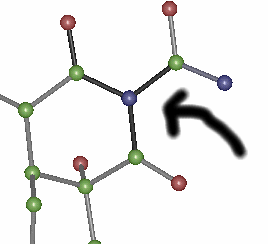
Black bonds are Crystals way of saying it lacks information on the local geometry
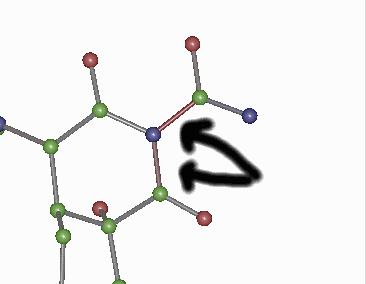
After running auto generated
scripts through quest:
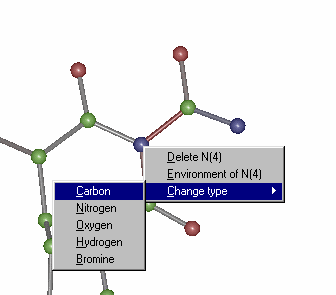 Red bonds imply bonds are
Red bonds imply bonds are
too short for this geometry
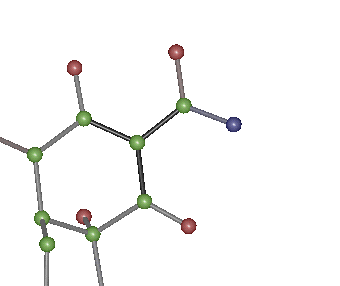 Change Nitrogen to Carbon using the mouse
Change Nitrogen to Carbon using the mouse
Bonds now within what is
expected from the CSD
Crystals:
Though of course you can look at the thermal ellipsoids (i.e., via Cameron provided with Crystals):

Though in the above validation case (to a novice crystallographer) the thermal from the incorrect atom may not be so obvious.
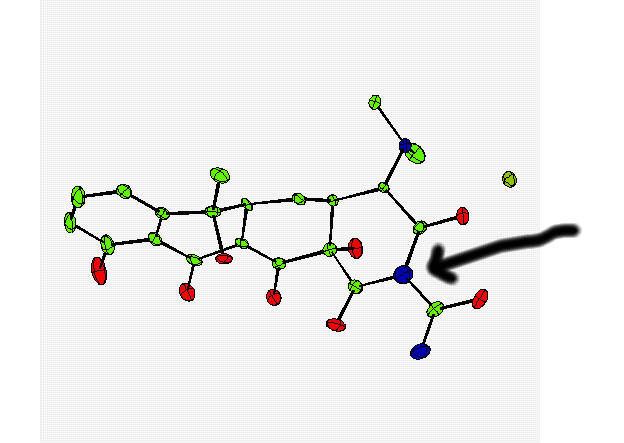
Powder Data Conversion/Importing Data
Initial problem in powder diffraction can be getting the data in the right format. For interconverting powder diffraction data: a vareity of programs exist which in combination can pretty much get you from one format to another.
Use of a text editor and spreadsheet may be occassionally required.
A very good text editor is the freeware PFE Editor for Windows:
http://www.lancs.ac.uk/people/cpaap/pfe/
Refer: Data Conversion/Importing data/structures
http://www.ccp14.ac.uk/solution/powderdataconv/
These Include: ConvX, Powder v2.00, Powder X, Winfit
Example of the ConvX for Windows : mass conversion of powder diffraction data
(http://www.ceramics.irl.cri.nz/Convert.htm):

Structure Importing, Conversion and Transformation
Summary List at:
http://www.ccp14.ac.uk/solution/structconv/
Be careful with these and check the results.
Best program at the moment is the shareware program CRYSCON
http://www.shapesoftware.com
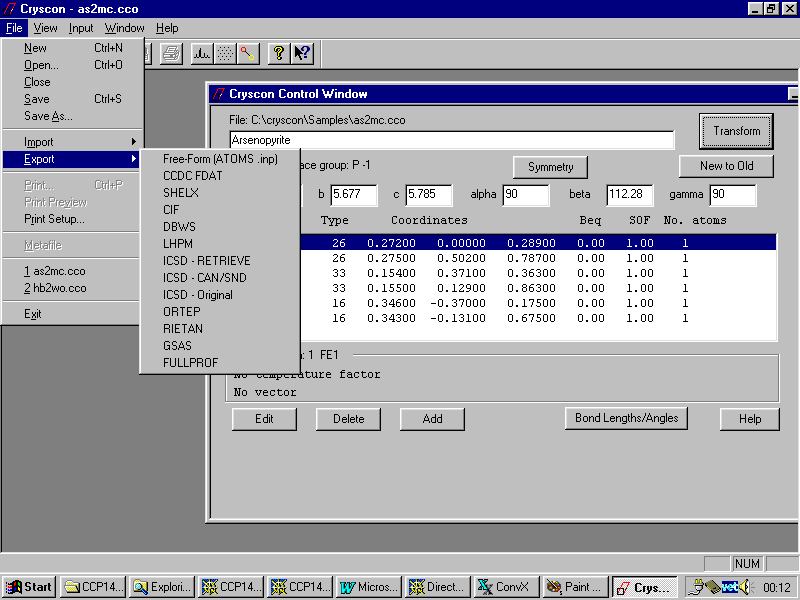
Other software such as Ortep-3 can import a wide variety of formats and output these as Shelx files.
Powder Diffraction Utility Software
Examining Data, peak finding, background stripping, alpha-2 stripping
Powder v 2.00:
http://www.ccp14.ac.uk/tutorial/powder/index.html
Powder X,
http://www.ccp14.ac.uk/tutorial/powderx/
WinFIT,
http://www.geol.uni-erlangen.de/html/software/soft.html
Winplotr,
http://www-llb.cea.fr/winplotr/winplotr.htm
XFIT,
http://www.ccp14.ac.uk/tutorial/xfit-95/xfit.htm
Example of PowderX for Windows
Graphical evaluation, backtground stripping, smoothing, alpha stripping, peak find and pass to treor indexing
Full GUI Operation
Alpha2 Strip, Background Strip, Peak Find

Peak Finding/Peak Profiling
For Overall Summary of available peak profiling software refer to:
http://www.ccp14.ac.uk/solution/peakprofiling/
These include: CMPR, DRXWin, EFLECH, GPLSFT, pearson.xls, SHADOW, Powder v2.00, PowderX, Winfit, Winplotr, XFIT
Example of XFIT for Windows (this can also perform fundamental parameters peak profiling for high accuracy peak positions from laboratory diffractometer data). This can be the difference between a convincing and unconvincing powder indexing from laboratory X-ray data.
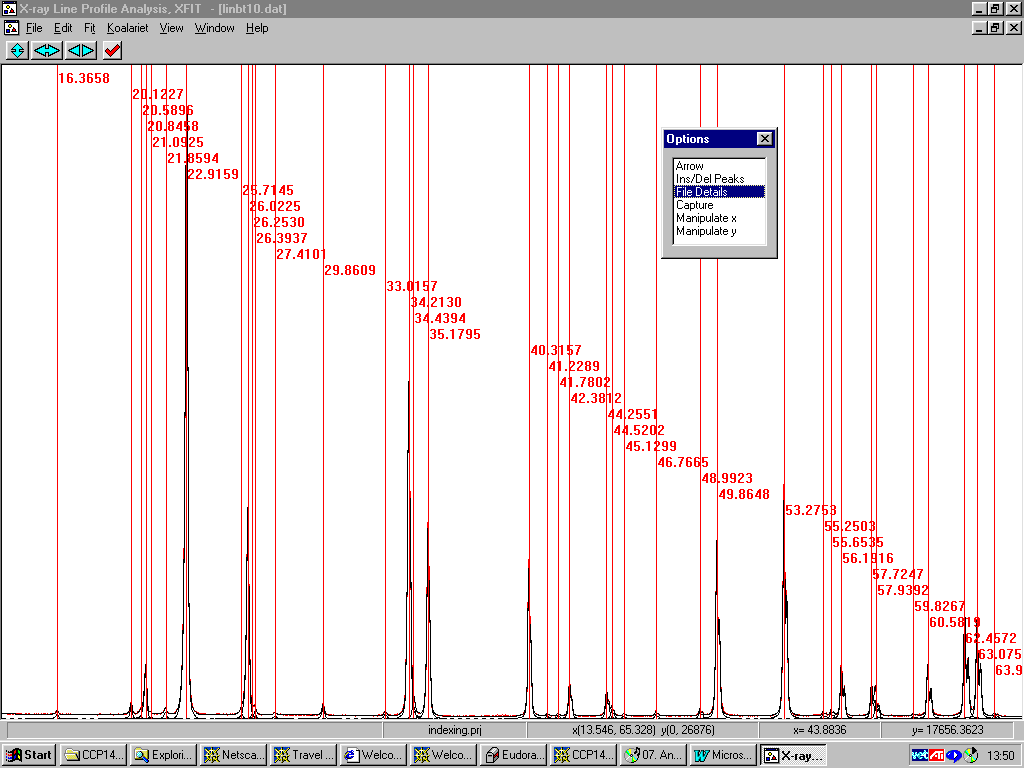

Powder Indexing:
A Non-trivial endeavour
For Overall Summary of available powder indexing software refer to:
http://www.ccp14.ac.uk/solution/indexing/
Powder Indexing:
Autox, Ito, Dicvol, Treor, Taup/Powder, Lzon, Losh, Kohl, Scanix, Xrayscan, EFLECH/Index, Supercell
Linking Suites:
Crysfire, Powder v2.00, PowderX, PROSZKI, WinPlotr, Chekcell
E.g., supercel is a specialise indexing program by Juan Rodriguez-Carvajal for indexing Super Cell and Incommensurate cells. (available within Winplotr)
http://www-llb.cea.fr/winplotr/winplotr.htm
At present the CRYSFIRE software by Robin Shirley links 8 different indexing programs (ito, dicvol, treor, taup, kohl, lzon, fjzn and losh) together with a common interface and using intelligent defaults. Important to have access to as many indexing programs as possible so you can get a feel for the range of possible solutions.
http://www.ccp14.ac.uk/tutorial/crys/
Example of CRYSFIRE Screen prompting the saving into one of 8 different indexing program formats:

Interpreting Crysfire Summary Files:
Powder Indexing and Spacegroup Assignment
Crysfire interlinks with Chekcell for Windows (part of the LMGP suite for Windows by Jean Laugier and Bernard Bochu). Chekcell provides a graphical interface for manually and automatically suggesting a best cell/spacegroup combination using both FOM and algorithms relating to parsimony of superfluous HKLs.
http://www.ccp14.ac.uk/tutorial/lmgp/
Chekcell has gone through the ~4000 solutions generated by Crysfire and recommended that a lower FOM (76.6) Rhombohedral (R3, R-3, R32, R-3M) cell is the best solution as found by Dicvol within Crysfire.
NOTE: IT IS A GRAPHICAL and CONTROLLED BY A GUI!
Takes much of the
drudge work out of evaluating possible solutions


Single Crystal Absorption Correction Options
Ortex, Crystals, WinGX and Platon give access to a variety of Absorption correction options.

For example:
via WinGX
Viewing or HKL Profiles
Blessing DREAR Software
Numerical:
Gaussian, Analytical, Spherica
l, Cylindrical
Semi-Empirical:
Psi-scans, Camel-Jockey, Multiscan
RefDelF:
Difabs, XABS2, Shelxa

After defining faces, you can view the Crystal via
XtalView

Before refinement, user is prompted which form of absorption corrected data to use:
Platon
(Viewing the Crystal Habit and multiple absorption correction options)

Single Crystal Indexing/Spacegroup Assignment
(some of which is also applicable to powder diffraction)
Most hardware vendors provide options for indexing but there are free-standing programs that can provide other options.
DIRAX for difficult Indexing problems.
ftp://ftp.chem.uu.nl/pub/dirax/
Twindex.
ftp://laue.chem.ncsu.edu/pub/X-ray/twindex/
Platon by Ton Spek (UNIX and Windows).
http://www.cryst.chem.uu.nl/platon/
ABSEN Single Crystal Program by Patrick McArdle
(comes with the ORTEX and WinGX suites)
http://www.nuigalway.ie/cryst/software.htm
http://www.chem.gla.ac.uk/~louis/software/




Unit Cell Refinement (Powders)
For Overall Summary of available unit cell refinement software refer to:
http://www.ccp14.ac.uk/solution/unitcellrefine/
This include:
Celref, LAPOD, Refcel, Unitcell, Eracel, Powder v2.00, XLAT, etc
Example of Celref for Windows by Jean Laugier and Bernard Bochu performing Graphical Unit Cell refinement on calcite in a multi-phase mixture (
http://www.ccp14.ac.uk/tutorial/lmgp/)

Full Profile Fitting (Powder)
For Overall Summary of available full profile analysis refer to:
Le Bail based: http://www.ccp14.ac.uk/solution/lebail/
Pawley Based: http://www.ccp14.ac.uk/solution/pawley/
The most common method of full profile fitting is that of Le Bail fitting: which is in most Rietveld packages. Is useful for:
Spacegroup Assignment
Unit Cell Refinement (when overlap is a problem)
Extracting Intensities for Structure Solution
Following is an example of using Fullprof Rietveld with the Winplotr for Windows program:

"Generic" Structure Solution from Powder Diffraction Data
Very non-trivial endeavour. (though indexing can be the limiting step in many attempted structure solutions)
EXPO - Direct Methods (Sirware Group) Makers of Sir92/Sir97
http://www.ba.cnr.it/IRMEC/SirWare_main.html
http://www.ccp14.ac.uk/ccp/web-mirrors/sirware/IRMEC/SirWare_main.html
If EXPO fails, used Le Bail or Pawley extracted data with Single Crystal Structure Solution Software as described below.
ESPOIR (GPL’d by Armel Le bail) Monte Carlo and pseudo simulated annealing - normally use as last resort (new version for Windows has "real space molecule and fragment location").
http://www.cristal.org/sdpd/espoir/
http://www.ccp14.ac.uk/ccp/web-mirrors/armel/sdpd/espoir/
"Available" Commercial Structure Solution from Powder Diffraction Data software:
Cerius 2 by Molecular Simulations
http://www.msi.com/life/products/cerius2/
Crystal Structure Determination Package (WinCSD/CSD)
http://imr.chem.binghamton.edu/zavalij/CSD.html
DIFFRACplus TOPAS
http://www.bruker-axs.com/production/products/xrd/software/topas/
Endeavour Structure Solution from Powder Diffraction Software
http://www.crystalimpact.com/endeavour/
Also refer: High-Throughput Crystal Structure Solution from Powder Diffraction Data (based around the developing DASH? Software)
http://www.esrf.fr/info/science/highlights/1999/chemistry/powder.html
EXPO :
Direct Methods Structure Solution from Powder Data (or extracted intensities)
Initially Run with an ASCII Input File
Then Controlled by the GUI Menu
Starting Information:
%struct cime
%job cimetidine -- Synchrotron data
%init
%data
range 8.01 84.99 0.01
pattern cime.pow
cont s 4 c 40 n 24 h 64
wave 1.52904
cell 10.6986 18.8181 6.8246 90.000 111.284 90.000
space p 21/n
sync
double
%extraction
%continue
Select the Control File and Start the Solution:

Profile Fitting/ Le Bail Extraction:

Starting the Direct Methods (at this point looks very similar to Sir 97):

Fourier Cycling:

Presenting the Final Result for Evaluation (along side the idealised connectivity from the ICDD database):


If EXPO seems to solve the structure
but looses it on the auto-building (possibly indicating a data quality problem) there are a few things that can be tried:
Lower the upper limit of the powder diffraction data
RECYCLE n (placed under FOURIER, n= cycle number)
Single Crystal Structure Solution
(Applicable to extracted Powder Data)
CAOS (also inside part of Sir97) – Ricardo Spagna, et. al.
Comes with an automatic Patterson Solution Option.
http://www.mlib.cnr.it/isc/caos/
http://www.ccp14.ac.uk/ccp/web-mirrors/caos/isc/caos/
Crisp – Part of the GPL’d Xtal Suite
Direct Methods
http://xtal.crystal.uwa.edu.au/
http://www.ccp14.ac.uk/ccp/web-mirrors/xtal/
Crunch – R. de Gelder, R.A.G. de Graaff & H. Schenk,
Direct Methods and automatic structure building
http://www-xtal.sci.kun.nl/xtal/documents/software/crunch.html
http://www.ccp14.ac.uk/ccp/web-mirrors/dirdif/xtal/documents/software/crunch.htmL
Dirdif - P.T. Beurskens, G. Beurskens, R. de Gelder, et al.
Patterson Methods for heavy atoms and fragments and automatic structure building
http://www-xtal.sci.kun.nl/xtal/documents/software/dirdif.html
http://www.ccp14.ac.uk/ccp/web-mirrors/dirdif/xtal/documents/software/dirdif.html
Windows: http://www.chem.gla.ac.uk/~louis/dirdif/
http://www.ccp14.ac.uk/ccp/web-mirrors/farrugia/~louis/dirdif/
Patsee – E. Egert and G. Sheldrick
Fragment Search
http://www.org.chemie.uni-frankfurt.de/egert/html/patsee.html
http://www.ccp14.ac.uk/ccp/web-mirrors/patsee/egert/html/patsee.html
Single Crystal Structure Solution (cont’d)
Shake’n’Bake (SnB) – Weeks, Miller, et al.
Dual-space direct methods. (Linux, SGI, IBM AIX, Alpha executables via web)
http://www.hwi.buffalo.edu/SnB/
http://www.ccp14.ac.uk/ccp/web-mirrors/snb/SnB/index.html
Shelxs 86/97- George Sheldrick
Direct Methods and Patterson Option
http://shelx.uni-ac.gwdg.de/SHELX/index.html
(SHELXD – for large structures. Beta versions are available from shelx ftp site )
Sir92/97 – Sirware Group: Cascarano, Giacovazzo el al
Direct Methods and automatic structure building
http://www.ba.cnr.it/IRMEC/SirWare_main.html
http://www.ccp14.ac.uk/ccp/web-mirrors/sirware/IRMEC/SirWare_main.html
(Sir2000 – aim for handling difficult problems with more than 2000 atoms in the asymmetric unit)
Solver – in NRCVAX Suite – based on Multan
Direct Methods
Peter White (pwhite@pyrite.chem.unc.edu)
XFPA – Frantisek Pavelcik
Patterson Methods and automatic structure building
E-mail: pavelcik@fns.uniba.sk
Single Crystal Examples. Summary:
1) Push the button,
2) Structure solves
3) If not, try next program (using the benefits of having access to multiple programs with different strengths) Single Crystal Suites make it trivial to easily use multiple programs.
Shelxs97
direct methods:
http://shelx.uni-ac.gwdg.de/SHELX/index.html

Resulting structure ready for building up:

Sir97 direct methods:
http://www.ba.cnr.it/IRMEC/SirWare_main.html
http://www.ccp14.ac.uk/ccp/web-mirrors/sirware/IRMEC/SirWare_main.html
Here Sir97 is just at the point of automatically assigning atom types during the automatic building up of a structure:

After Completion (just have to rename 3 atoms):

Dirdif solving a Structure. Program of choice for heavy atom problems.
http://www-xtal.sci.kun.nl/xtal/documents/software/dirdif.html
http://www.ccp14.ac.uk/ccp/web-mirrors/dirdif/xtal/documents/software/dirdif.html
Windows: http://www.chem.gla.ac.uk/~louis/dirdif/
http://www.ccp14.ac.uk/ccp/web-mirrors/farrugia/~louis/dirdif/

Resulting structure with every assigned non-Hydrogen atom correctly placed and named:

Crunch
Structure solved (in this cases via the Platon/System S suite) and built to near completion (though this is really a heavy atom problem). One missing Carbon atom and various atom reassignments to be done.


Shake’n’Bake (SnB) v2.1 (large structures)
(Linux, SGI, IBM AIX, and Alpha Executables available at present)
http://www.hwi.buffalo.edu/SnB/
http://www.ccp14.ac.uk/ccp/web-mirrors/snb/SnB/index.html
Java GUI Interface will then take you through setting up SnB up to visualising resulting structures. Is not for those who like speedy results.
Though in a recent July 2000 "as yet unpublished" structure
SnB 2.1 gave the correct solution in around 30 minutes
(~250 atoms in the asymmetric unit). 600MHz PC / Linux








Two new packages for large structures:
On a new Cyclodextrin structure
(Expected > 1000 atoms in the asymmetric unit). Was in the "unsolvable bin" prior to being passed on to the Sirware Group and George Sheldrick): Both Sir2000 and ShelxD programs solved the Cyclodextrin in default modes:
ShelxD
9 hours on 800Mhz Athlon running Linux
Sir2000
103 minutes on a Compaq XP10000
(times are not directly comparable as are different computers)
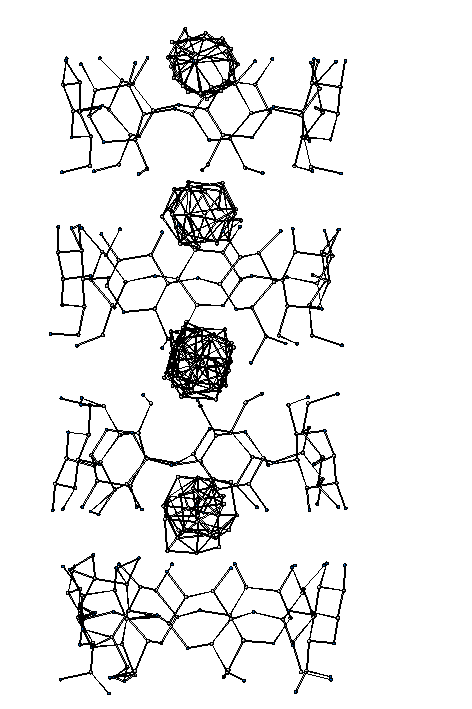
2D-3D Model Building Software
(Applicable for Generating 3D fragments for Patsee/Dirdif Orient – single crystal/powder)
Refer:
http://www.ccp14.ac.uk/solution/2d_3d_model_builders/
E.g., CORINA (COoRdINAtes) (Use web based direct submission):
http://www2.ccc.uni-erlangen.de/software/corina/free_struct.html
Comes with a Java Molecule Editor for building up the 2D structure over the web which generates the required SMILES string from the drawn molecule. In the following example a 2D tetracyline PDB file is generated: CN(C)C3C(O)=C(C(N)=O)C(O)C4(C)C(O)C2C(=O)c1c(O)cccc1C(C)(O)C2CC34
(Word of warning: the "energy minisation" may generate an inaccurate 3D model where different conformations are possible)


Getting Fragments intoDirdif/Dirdif for Windows.
One of the User Friendliest methods is to use is WinGX’s "SXGRAPH" GUI Shelx INS/RES file Editor
 (includes ability to manipulate structures for Dirdif fragment searching)
(includes ability to manipulate structures for Dirdif fragment searching)
Either graphically Browse and Edit the Orbase Entries or Open an imported structure file (CSSR, CSD, Shelx or CIF from existing structure refinement), clean it up, then save it as a fragment ready for immediate use with Dirdif for Windows. (or any Dirdif)
(In the following case, a Cyclodextrin Fragment)



Single Crystal Structure Refinement
CAOS (freestanding and also available inside Sir97)
http://www.isc.mlib.cnr.it/caos/
http://www.ccp14.ac.uk/ccp/web-mirrors/caos/caos/
http://www.ba.cnr.it/IRMEC/SirWare_main.html
http://www.ccp14.ac.uk/ccp/web-mirrors/sirware/IRMEC/SirWare_main.html
Crystals
http://www.xtl.ox.ac.uk/
http://www.ccp14.ac.uk/ccp/ccp14/ftp-mirror/crystals/pub/crystals/
NRCVAX
Contact: pwhite@pyrite.chem.unc.edu
Shelxl (refinement program for System S/ORTEX/WinGX)
http://shelx.uni-ac.gwdg.de/SHELX/index.html
The following freely available single crystal suites are based around Shelx for Refinement:
Platon/System S http://www.cryst.chem.uu.nl/platon/
ORTEX http://www.nuigalway.ie/cryst/software.htm
WinGX http://www.chem.gla.ac.uk/~louis/software/
Xtal (GPL’d)
(3 different refinement programs within the suite)
http://xtal.crystal.uwa.edu.au/
http://www.ccp14.ac.uk/ccp/web-mirrors/xtal/
Empirical Observation
is that individual refinement programs may perform best using slightly different sets of the data ("all HKL data" or removing < 4 sigma reflections) or different methods of interacting with the refinement. e.g,
Shelxl 97 seems to like "all" the HKL data (including < 4 sigma reflections)
Crystals for Windows is happier if you remove the < 4 sigma data
From the GUI Menu: Refinement, Omit Reflections
Script System:
\list 28 minima ratio=4 end
Examples of more specialised single crystal structure refinement software:
Fullprof (is included with the Winplotr graphics program)
ftp://bali.saclay.cea.fr/pub/divers/winplotr/
http://www.ccp14.ac.uk/ccp/ccp14/ftp-mirror/fullprof/pub/divers/winplotr/
Combined powder/single crystal. Incommensurate structures.
GSAS
ftp://ftp.lanl.gov/public/gsas/
http://www.ccp14.ac.uk/ccp/ccp14/ftp-mirror/gsas/public/gsas/
Combined powder/single crystal. f’ f’’ refinement.
JANA
http://www-xray.fzu.cz/jana/jana.html
http://www.ccp14.ac.uk/ccp/web-mirrors/jana/jana/jana.html
Incommensurate and f’ f’’ refinement
Prometheus
http://kristall.uni-mki.gwdg.de/prometheus.htm
http://www.ccp14.ac.uk/ccp/ccp14/ftp-mirror/prometheus/PROMETHEUS/
Anharmonic refinement
Single Crystal Structure Refinement:
Example of Sir97/CAOS:
By default, CAOS is used via a powerful scripting language. It is more Photogenic when operated inside Sir97 (point and click mode) thus the following screen dumps are from Sir97
Automatic Addition of Carbon bonded hydrogens at the click of a button:

Single Crystal Structure Refinement:
GUI CRYSTALS for Windows:Guided Refinement Wizard 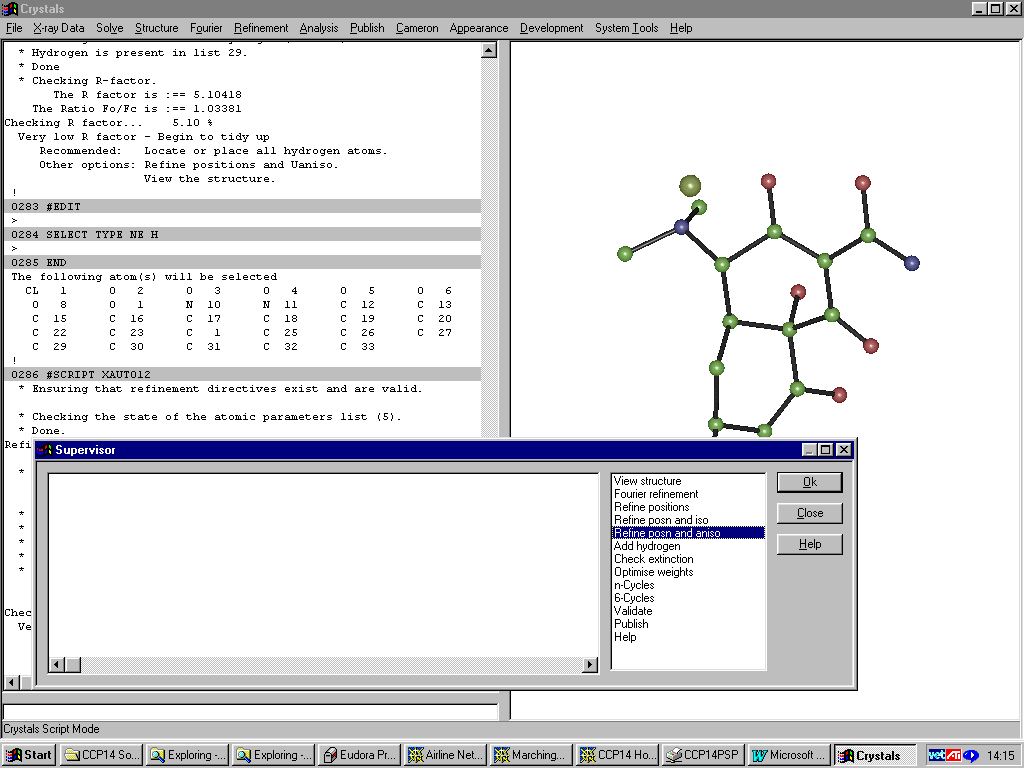
Single Crystal Structure Refinement:
Controlling a Shelx refinement via WINGX using the SXGRAPH GUI for Windows:
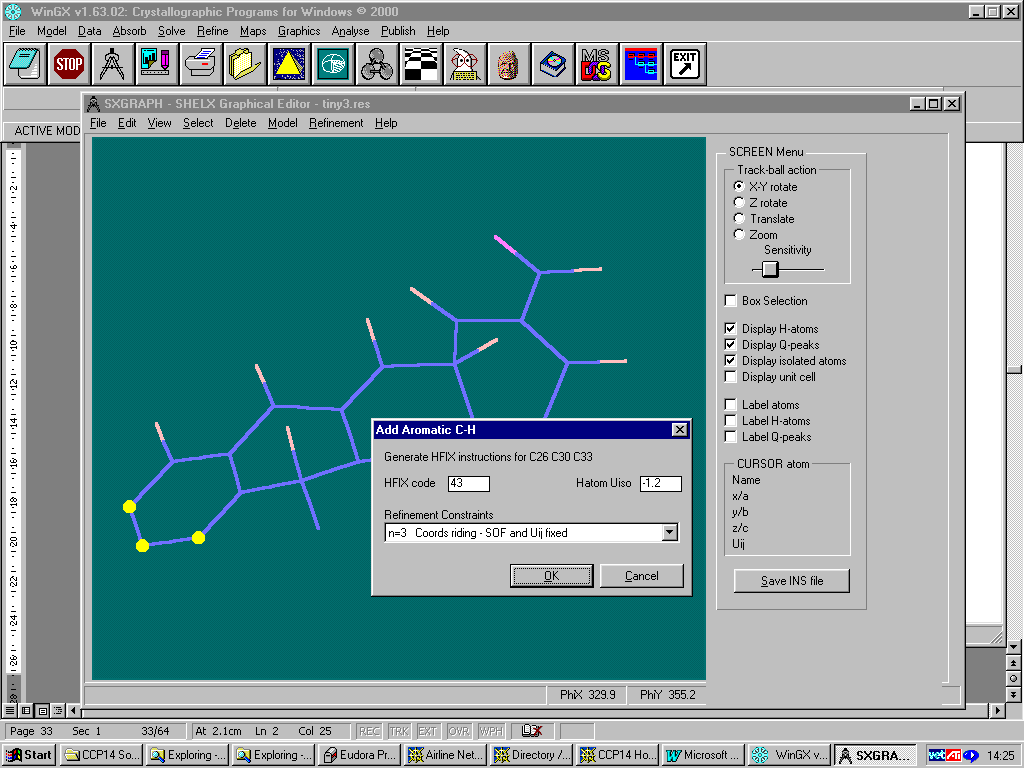
Structure Refinement using Powder Diffraction Data
(Rietveld Refinement)
Large range of programs to choose from:
http://www.ccp14.ac.uk/mirror/mirror.htm
Freely Available Rietveld Software
(Contact Names are provided)
ARITVE
Armel Le Bail - armel@fluo.univ-lemans.fr
Refinement of Glasses, ASCII Control file
http://fluo.univ-lemans.fr:8001/aritve.html
http://www.cristal.org/aritve.html
http://www.ccp14.ac.uk/ccp/web-mirrors/armel/aritve.html
ftp://ftp.minerals.csiro.au/pub/xtallography/ccp14/ccp/web-mirrors/armel/aritve.html
BGMN
Joerg Bergmann - support@bgmn.de
Fundamental Parameters Rietveld
http://www.bgmn.de
http://www.ccp14.ac.uk/ccp/web-mirrors/bgmn/
ftp://ftp.minerals.csiro.au/pub/xtallography/ccp14/ccp/web-mirrors/bgmn/index.html
DBWS
Ray Young - r.young@physics.gatech.edu
DBWS Style Control File, Includes a DB2dI program for converting a Rietveld output into an appropriate D/I format suitable for submission to the ICDD.
Contact the author on the above E-mail address.
DEBVIN
Sergio Bruckner - sergio.bruckner@dstc.uniud.it
Rietveld refinement with generalized coordinates subjected to geometrical restraints. Applications in refinement of polymers.
ftp://ftp.cc.uniud.it/DEBVIN/
http://www.ccp14.ac.uk/ccp/ccp14/ftp-mirror/debvin/DEBVIN/
ftp://ftp.minerals.csiro.au/pub/xtallography/ccp14/ccp/ccp14/ftp-mirror/debvin/DEBVIN/
EXPO
Sirware Group - cryst@area.ba.cnr.it
While mainly for Structure Solution, also has menu driven Rietveld.
http://www.ba.cnr.it/IRMEC/SirWare_main.html
http://www.ccp14.ac.uk/ccp/web-mirrors/sirware/IRMEC/SirWare_main.html
Fullprof for UNIX and PC
Juan Rodriguez-Carvajal - juan@bali.saclay.cea.fr
DBWS Style ASCII Control file with large variety of functionality.
ftp://charybde.saclay.cea.fr/pub/divers/
http://www.ccp14.ac.uk/ccp/ccp14/ftp-mirror/fullprof/pub/divers/
ftp://ftp.minerals.csiro.au/pub/xtallography/ccp14/ccp/ccp14/ftp-mirror/fullprof/pub/divers/
WinPlotr Graphics link into Fullprof with enhanced functionality:
http://www-llb.cea.fr/winplotr/winplotr.htm
http://www.ccp14.ac.uk/ccp/web-mirrors/plotr/winplotr/winplotr.htm
GSAS for UNIX and PC
Bob Von Dreele - vondreele@lanl.gov
Menu driven interface with large vareity of functionality including Fourier map generation and viewing, ORTEP, Texture Analysis
ftp://ftp.lanl.gov/public/gsas/
http://www.ccp14.ac.uk/ccp/ccp14/ftp-mirror/gsas/public/gsas/
EXP Tcl/Tk GUI - new GUI replacement of expedit being developed by Brain Toby:
http://www.ncnr.nist.gov/programs/crystallography/software/expgui/expgui_intro.html
http://www.ccp14.ac.uk/ccp/web-mirrors/briantoby/programs/crystallography/software/expgui/expgui_intro.html
Koalariet
Alan Coelho - CCP14 Contact - L. Cranswick (l.cranswick@dl.ac.uk)
Fundamental Parameters Rietveld - sequel is called "TOPAS" by Bruker
http://www.ccp14.ac.uk/tutorial/xfit-95/xfit.htm
LHPM/Rietica for Win95/NT
Brett Hunter - bah@ansto.gov.au
Full GUI and/or DBWS ASCII file driven, Fourier Maps, I.D. Brown bond-valence analysis.
ftp://ftp.ansto.gov.au/pub/physics/neutron/rietveld/Rietica_LHPM95/
http://www.ccp14.ac.uk/ccp/ccp14/ftp-mirror/ansto/pub/physics/neutron/rietveld/Rietica_LHPM95/
MAUD for Java
Luca Lutterotti - Luca.Lutterotti@ing.unitn.it
Sequel to Rietquan and all menu driven; concentrating on size/strain/stress analysis
http://www.ing.unitn.it/~luttero/
http://www.ccp14.ac.uk/ccp/web-mirrors/lutterotti/~luttero/
ftp://ftp.minerals.csiro.au/pub/xtallography/ccp14/ccp/web-mirrors/lutterotti/~luttero/index.html
PREMOS/REMOS
Akiji Yamamoto - yamamoto@nirim.go.jp
Modulated Structure Refinement
http://www.nirim.go.jp/~yamamoto/
http://www.ccp14.ac.uk/ccp/web-mirrors/remos/~yamamoto/
ProDD
Jon Wright - jpw22@cam.ac.uk
Based on the CCSL profile refinement routines
http://www.cus.cam.ac.uk/~jpw22/
Profil
Jeremy Cockcroft - cockroft@gordon.cryst.bbk.ac.uk
Part of the PDPL Powder Diffraction Suite
ftp://img.cryst.bbk.ac.uk/pdpl/
http://www.ccp14.ac.uk/ccp/ccp14/ftp-mirror/profil/PDPL/
ftp://ftp.minerals.csiro.au/pub/xtallography/ccp14/ccp/ccp14/ftp-mirror/profil/PDPL/
Riet7/SR5
Ian Madsen - ian.madsen@minerals.csiro.au
DBWS Style Control File, Variable Count Time Data
ftp://ftp.minerals.csiro.au/pub/xtallography/
http://www.ccp14.ac.uk/ccp/ccp14/ftp-mirror/csirominerals-anon-ftp/pub/xtallography/
RIETAN-2000 (GPL’d)
Fujio Izumi - izumi@nirim.go.jp
Whole-pattern fitting based on the maximum-entropy method (MEM)
http://www.nirim.go.jp/~izumi/rietan/angle_dispersive/angle_dispersive.html
http://www.ccp14.ac.uk/ccp/web-mirrors/rietan/~izumi/rietan/angle_dispersive/angle_dispersive.html
ftp://ftp.minerals.csiro.au/pub/xtallography/ccp14/ccp/web-mirrors/rietan/~izumi/rietan/angle_dispersive/angle_dispersive.html
Rietquan for Windows
Luca Lutterotti - Luca.Lutterotti@ing.unitn.it
Menu driven; concentrating on size/strain/stress analysis. Superceded by MAUD for Java.
http://www.ing.unitn.it/~luttero/
http://www.ccp14.ac.uk/ccp/web-mirrors/lutterotti/~luttero/
ftp://ftp.minerals.csiro.au/pub/xtallography/ccp14/ccp/web-mirrors/lutterotti/~luttero/index.html
Simref
Harold Ritter - harald.ritter@uni-tuebingen.de
Simultaneous Rietveld Refinement with Multible Powder Datasets High temperature experiment; Incommensurate structure refinement
Simpro Pawley software and MEED Maximum entropy also available.
http://www.uni-tuebingen.de/uni/pki/
http://www.ccp14.ac.uk/ccp/web-mirrors/pki/uni/pki/index.html
ftp://ftp.minerals.csiro.au/pub/xtallography/ccp14/ccp/web-mirrors/pki/uni/pki/index.html
WinMprof for Windows
Alain Jouanneaux - jouanneaux@univ-lemans.fr
Le Bail fitting. Has in built Fourier Q peak finding for building up structures.
http://pecdc.univ-lemans.fr/WinMProf/WinMProf.htm
http://www.ccp14.ac.uk/ccp/web-mirrors/winmprof/WinMProf/WinMProf.htm/
ftp://ftp.minerals.csiro.au/pub/xtallography/ccp14/ccp/web-mirrors/winmprof/WinMProf/WinMProf.htm
XND
Jean-Francois Berar - berar@polycnrs-gre.fr
Simultaneous Rietveld Refinement with Multible Powder Datasets High temperature experiment; Incommensurate structure refinement, Can handle "parasitic emission lines" such as CukB, Tungsten
http://RX-Crg1.polycnrs-gre.fr/public/xnd/xnd.html
ftp://labs.polycnrs-gre.fr/pub/xnd/
http://www.ccp14.ac.uk/ccp/web-mirrors/xnd/public/xnd/xnd.html
http://www.ccp14.ac.uk/ccp/ccp14/ftp-mirror/xnd/pub/xnd/
ftp://ftp.minerals.csiro.au/pub/xtallography/ccp14/ccp/web-mirrors/xnd/public/xnd/xnd.html
ftp://ftp.minerals.csiro.au/pub/xtallography/ccp14/ccp/ccp14/ftp-mirror/xnd/pub/xnd/
XRS-82/DLS-76
Christian Baerlocher - baerlocher@kristall.erdw.ethz.ch
Structure Refinement, ASCII Control Files
http://kristall.erdw.ethz.ch/software/soft.html
http://www.ccp14.ac.uk/ccp/web-mirrors/ethz/software/soft.html
ftp://ftp.minerals.csiro.au/pub/xtallography/ccp14/ccp/web-mirrors/ethz/software/soft.html
Rietveld Program Interfaces
Not yet as robust and powerful as single crystal refinement programs (Single Crystal programs are very poweful and do a lot for the user)
Unlike most single crystal suites, you are not interacting directory with the structures on the screen.
Many choose their Rietveld based on what the people down the road are using. Not only human nature but learning a Rietveld program from scratch can be difficult.
Interfaces into Rietveld programs vary from GUIs to direct editing of ASCII files.

GUI LHPM/Rietica for Windows

EXPGUI for GSAS:

Fullprof
Single Crystal Suites
(Applicable to Powder Diffraction)
Single crystal suites can be very powerful
as they allow users to quickly pick and mix a variety of programs at the click of a button.
ORTEX - Patrick McArdle
Shelx86/Shelx97 for Structure Solution
Shelxl for refinement
http://www.nuigalway.ie/cryst/software.htm
CCP14 Mirror: http://www.ccp14.ac.uk/ccp/web-mirrors/ortex/cryst/software.htm
WinGX - Louis Farrugia
Shelx86/Shelx97, Sir92/Sir97, Dirdif, Patsee for Structure Solution
Shelxl for refinement
Fourier Map Calculation and Viewing
Links to very large array of programs.
http://www.chem.gla.ac.uk/~louis/wingx/
CCP14 Mirror: http://www.ccp14.ac.uk/ccp/web-mirrors/farrugia/~louis/wingx/
System S/Platon - Ton Spek
Shelx86/Shelx97, Sir97, Dirdif, Crunch Structure Solution
(Crunch, EXOR, Sir97 and Dirdif for auto-building)
Shelxl for refinement
Fourier Map Calculation and Viewing
Fully automatic Structure solution and refinement
http://www.cryst.chem.uu.nl/platon/
CCP14 Mirror: http://www.ccp14.ac.uk/ccp/web-mirrors/platon-spek/software.html
Single Crystal Suites (Cont’d)
(Applicable to Powder Diffraction)
Crystals –Watkin, Prout, Carruthers, Betteridge, R.I. Cooper
Shelxs and Sir for Structure Solution
Crystals for refinement
Fourier Map Calculation and Viewing
Guided refinement for students and chemists.
http://www.xtl.ox.ac.uk/
CCP14 Mirror: http://www.ccp14.ac.uk/ccp/web-mirrors/crystals/
Xtal (GPL’d)
Crisp and Patsee for Structure Solution
Xtal for refinement
Fourier Map Calculation and Viewing
http://xtal.crystal.uwa.edu.au/
CCP14 Mirror: http://www.ccp14.ac.uk/ccp/web-mirrors/xtal/
NRCVAX
Solver for Structure Solution
NCVAX for refinement
Contact: pwhite@pyrite.chem.unc.edu
Single Crystal Suite Examples
Note: it is almost impossible to do justice to any of these single crystal suites withing the time allowed. Allow access large range of functionality at the click of a button.
ORTEX Menu System
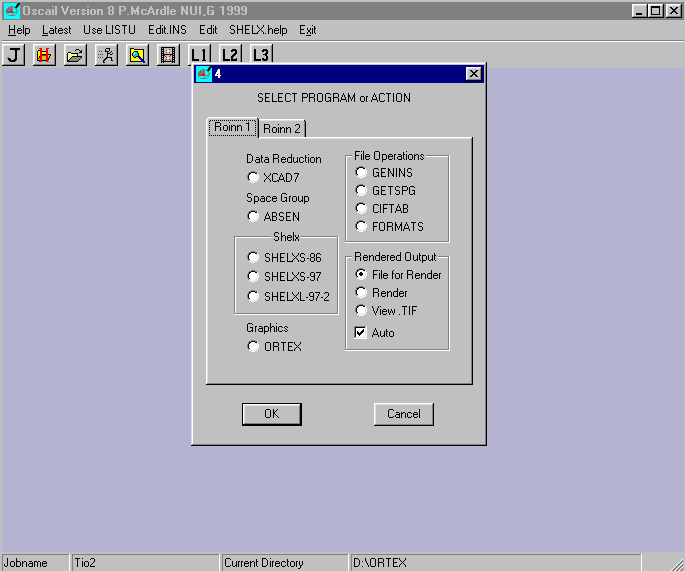
Examining a structure in ORTEX

WinGX menu system:

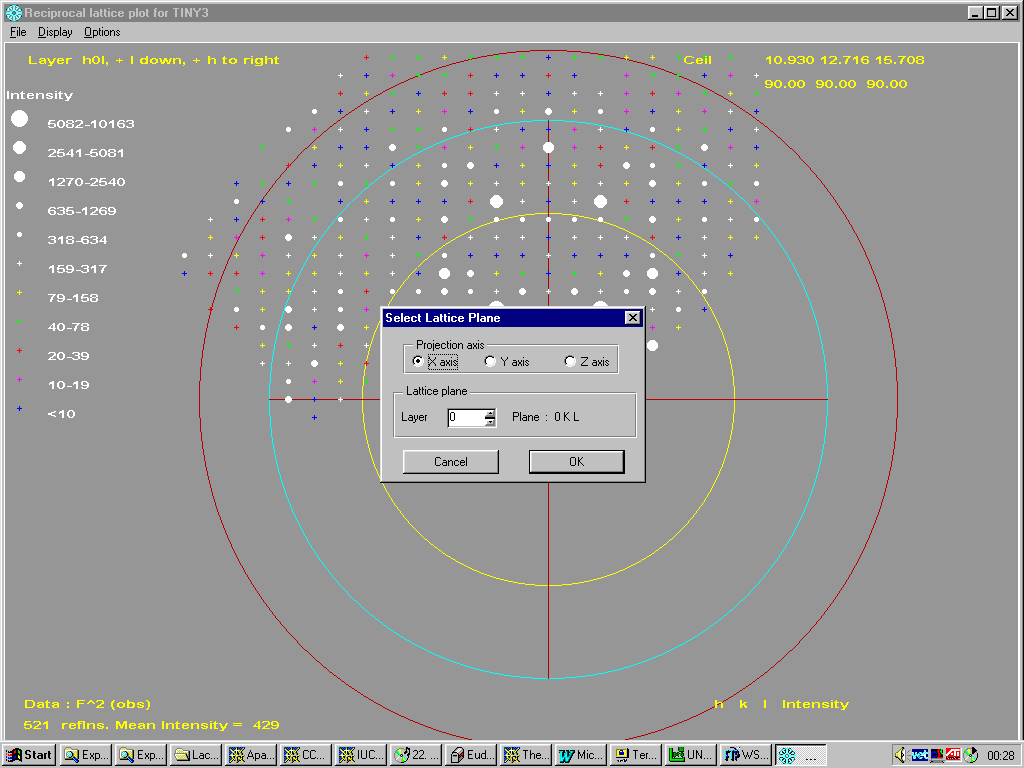 Preliminary work on a new structure: looking at the E-stats and HKLs
Preliminary work on a new structure: looking at the E-stats and HKLs
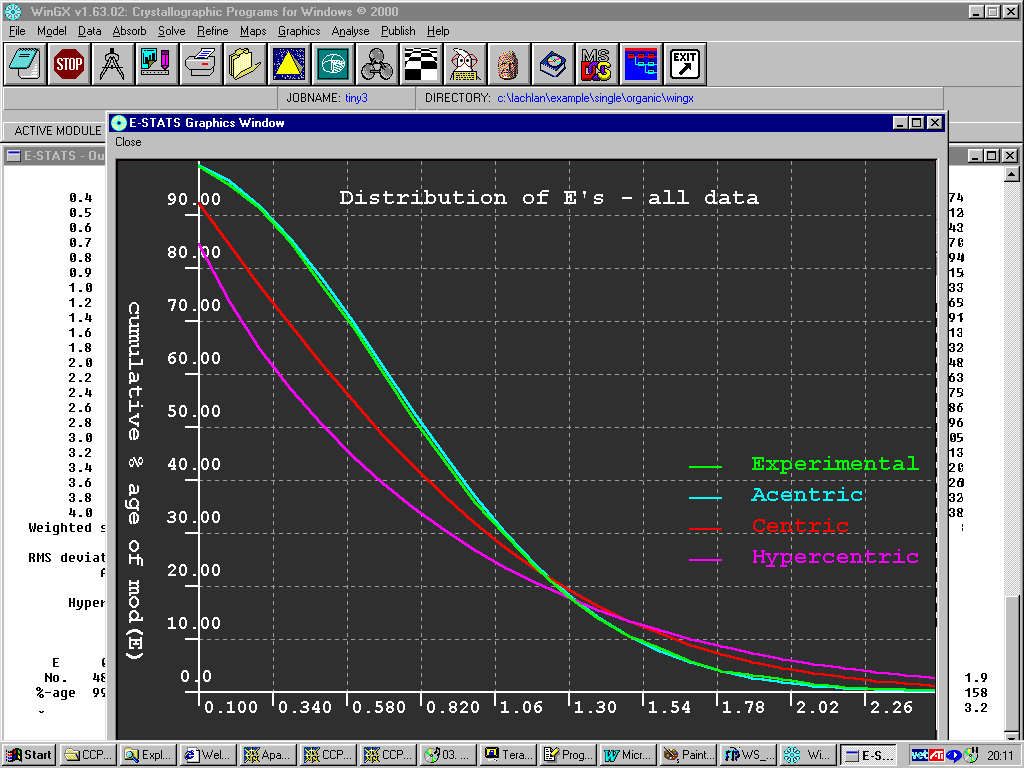
Platon/System S menu system:
Platon/System S also can access 4 separate programs to automatically build up a structure (EXOR, Dirdif, Sir, Crunch).

Multiple Pathways for Structure Solving
Solving in one program – automatic building in another: via Platon/System S
(Cesium Titanium Silicate)
Solve in Shelx86
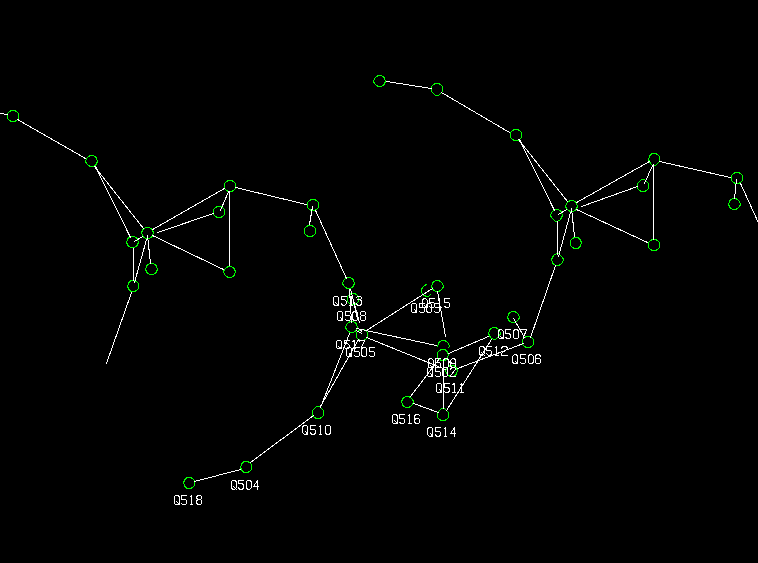
Use the System S/Platon EXOR function to build up the structure
(also have the other options of using Crunch, Sir and Dirdif to build up the structure).

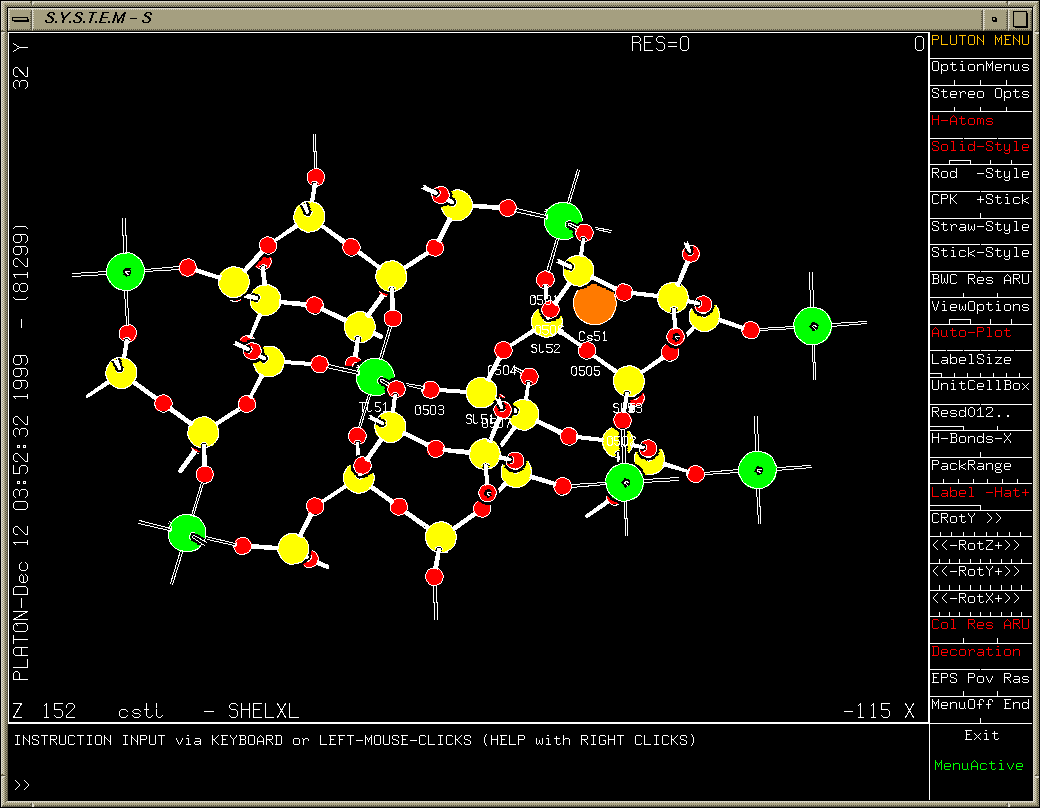
One oxygen atom left to find (after refining heavy atoms anisotropically). Purple Q peak stands out quite clearly.
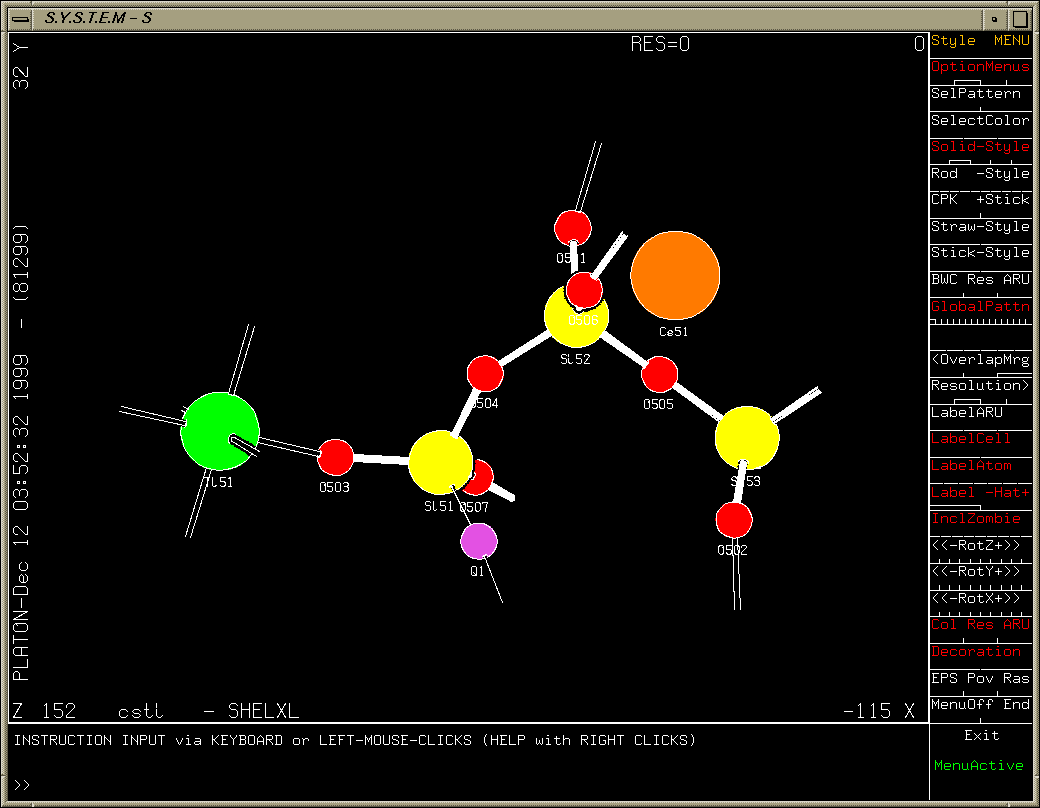
Graphically Interacting with the Structure
Most freely available programs and suites now have the ability to interact directly with a graphical representation of the structure during solving and refining.
For routine and not so routine refinements, point and click interfaces are now available, complementing the ASCII file or command line interfaces.
3rd party programs can be useful: e.g
., Ortep-3 by Louis Farrugia will also read Fullprof, Rietica and GSAS Rietveld structure files.
 ORTEX / WinGX / Crystals/ CAOS-Sir97/ Platon-System S/ GNU Xtal Suite
ORTEX / WinGX / Crystals/ CAOS-Sir97/ Platon-System S/ GNU Xtal Suite  / Gretep
/ Gretep
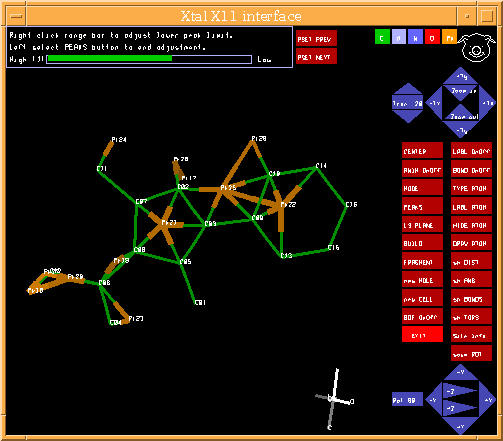





Example of Using the Fourier Map Capabilities of Single Crystal Suites
WinGX:
In the above Cesium Titanium Silicate, thermals on one or two of the oxygens seem quite large. If you don’t believe your eyes, a check through Platon will tell you about it.
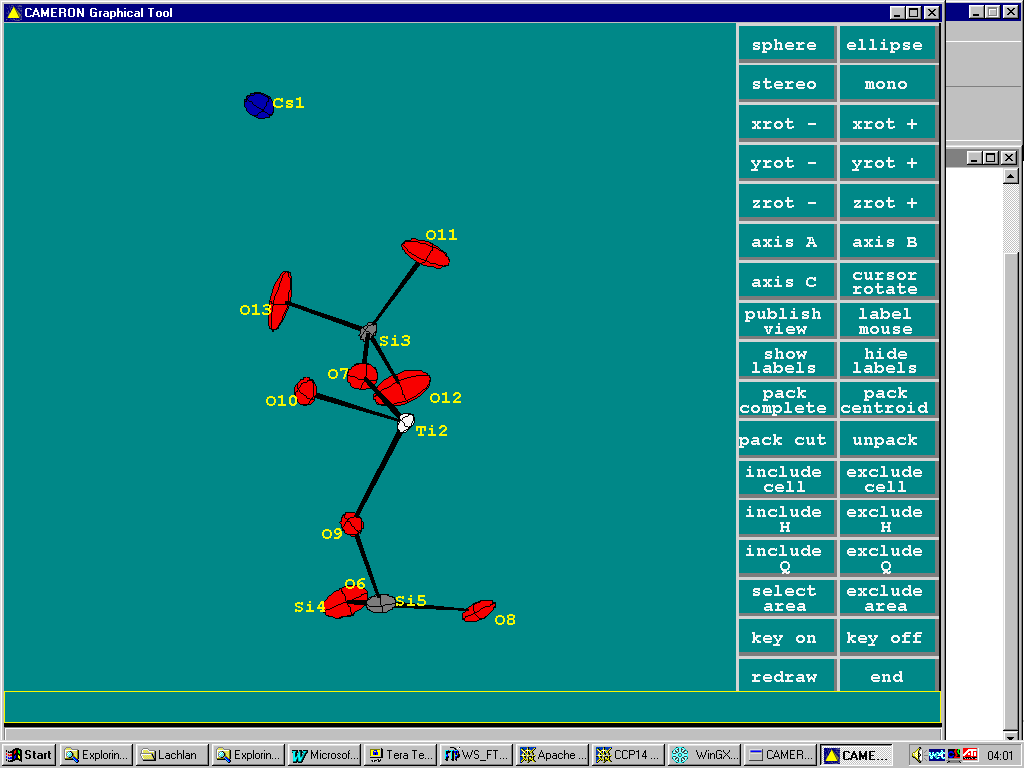
Doing an Shelxl OMIT on the offending atom, go into the WinGX Fourier Map Generator tpo generate a difference map (either slant plane of 3D):
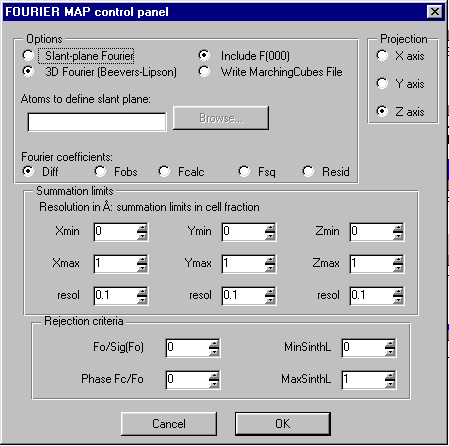
Generate the map:

Animating through the map, it is possible to see a slight peanut shape in the difference map of the oxygen showing a slight split atom problem.
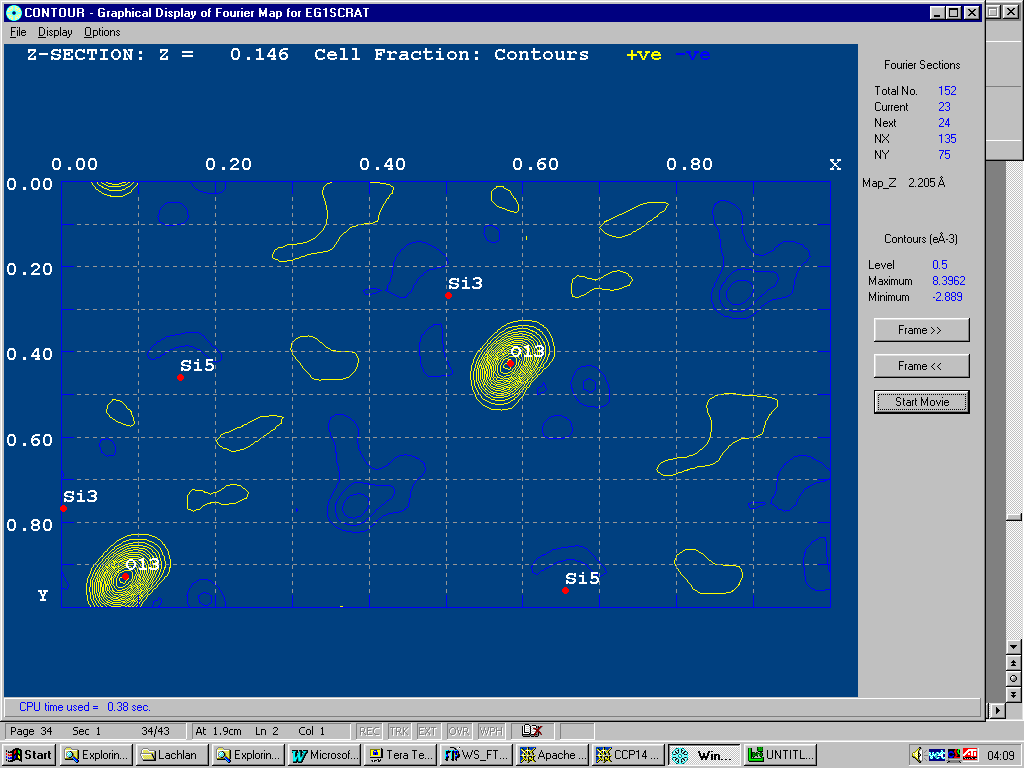
Example of WinGX fourier map animating through a zeolite with disordered template.
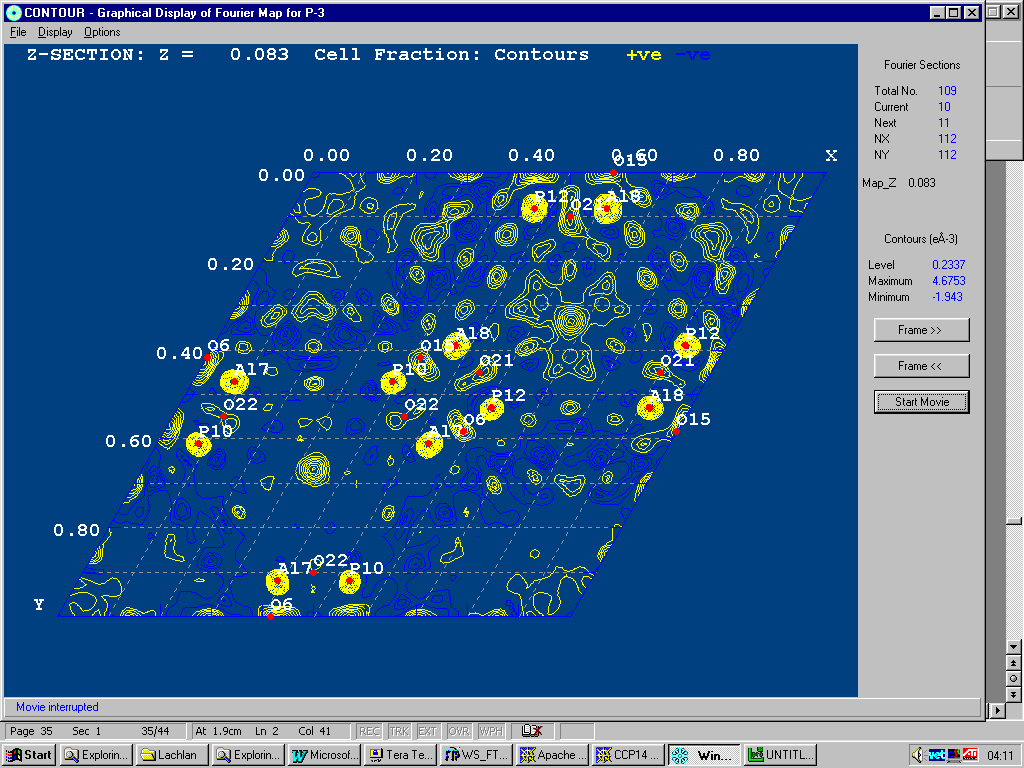
Fourier Maps – Single Crystal Suites
Crystals – Slant Plane Fourier Map:
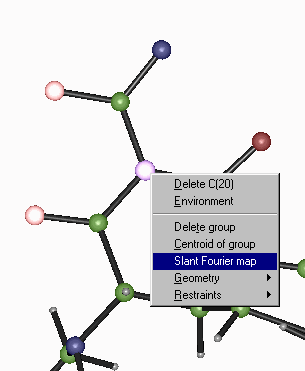 Define the Slant Plane by selecting 3 atoms then right click to go into the Fourier Map option.
Define the Slant Plane by selecting 3 atoms then right click to go into the Fourier Map option.
Examine slant plane difference map looking at hydrogen positions – via the Marching Cubes 3D Fourier Map viewer by Michal Husak (also linked into)
http://mysak.umbr.cas.cz/~husakm/Public/MarchingCubeELD/MarchingCubeELD.htm
http://www.ccp14.ac.uk/ccp/web-mirrors/marchingcube-fourierviewer/~husakm/Public/MarchingCubeELD/MarchingCubeELD.htm
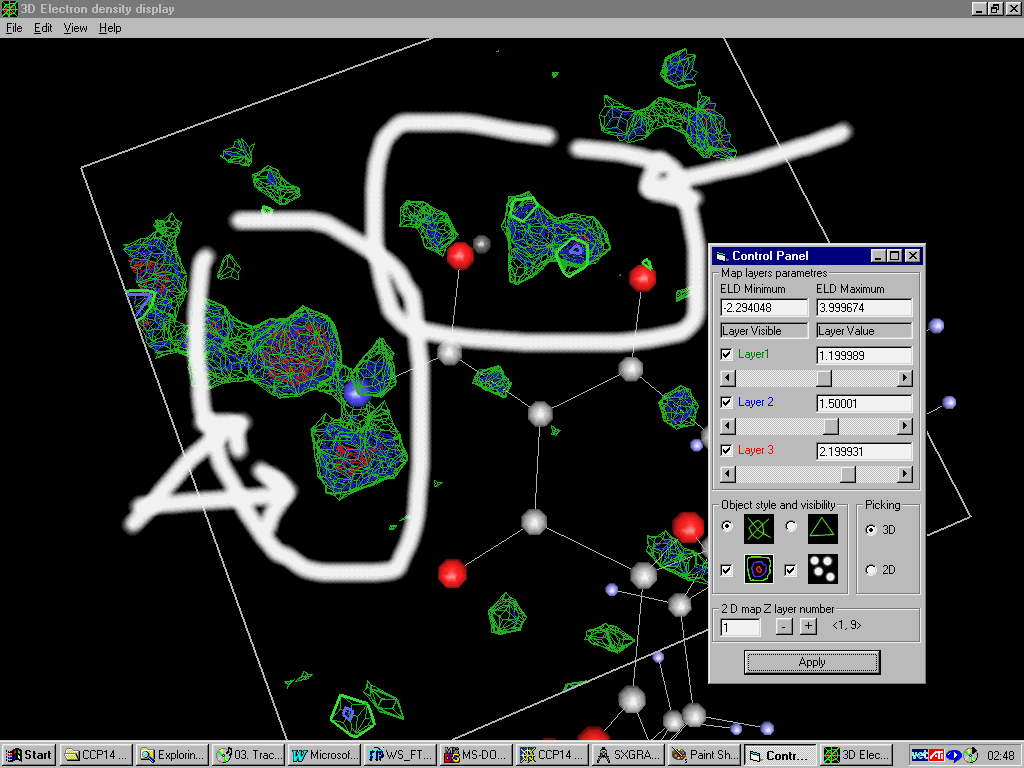
Platon/System S Fourier Map:
Examining slant plane difference map looking at hydrogen positions.

Using WinGX MapView:
(Can be run as a freestanding program linked into any program that will output a Mapview friendly format)
Examining slant plane difference map looking at hydrogen positions
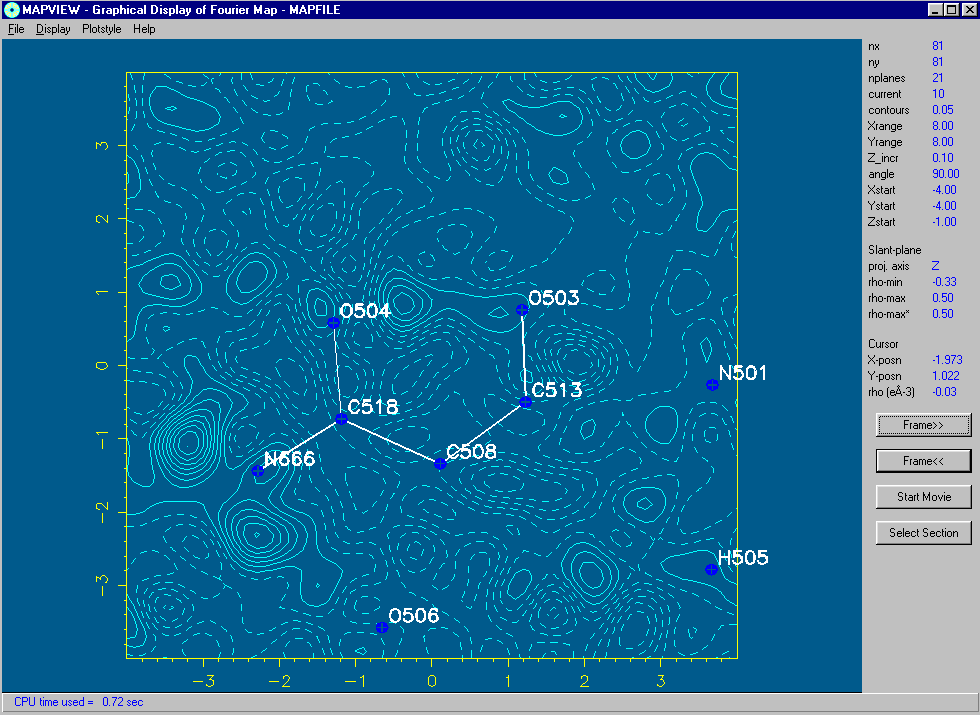
Using the 2D Bitmap Mode of MapView:
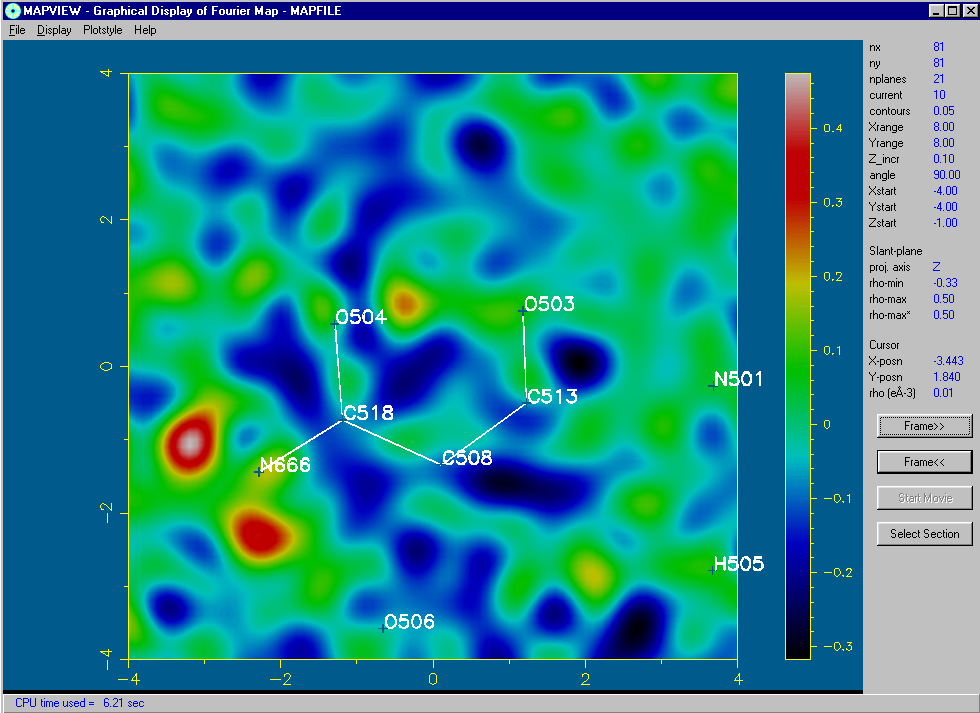
Fourier Capability in Rietveld Software
Summary List at:
http://www.ccp14.ac.uk/solution/rietveld_fourier_maps/
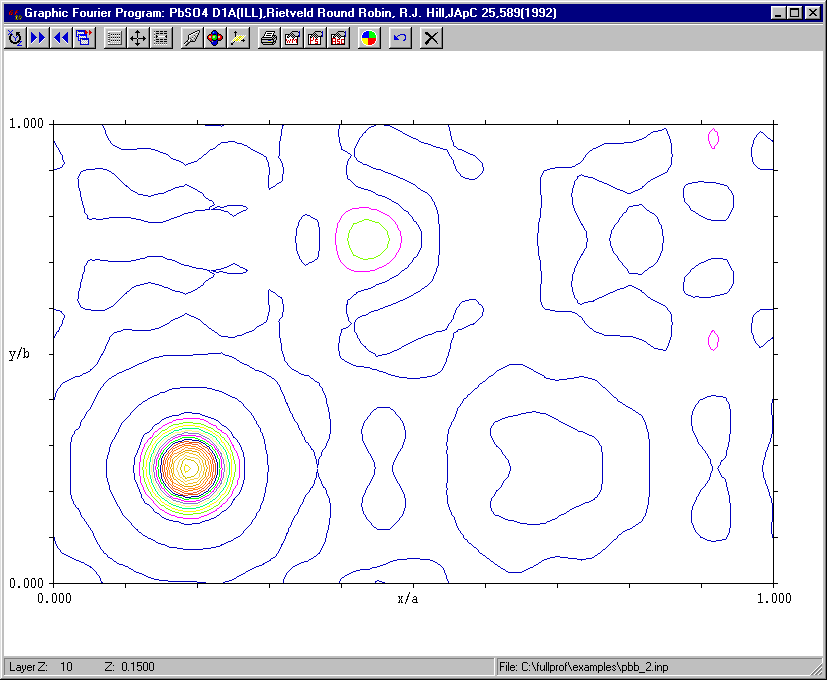
Examples:
Fullprof/GFOUR
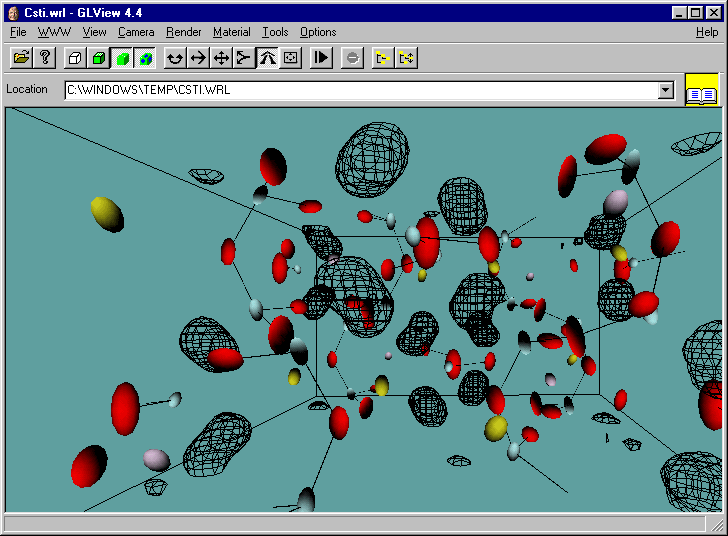
GSAS
(including
VRML output)
WinMPROF (Q peak location)
Structure Quality Checking
(Applicable to Powder Diffraction)
(Each suite can offer different features)
ORTEX:
Example of the Void Finding and graphical viewing within ORTEX (including estimate of time to completion)
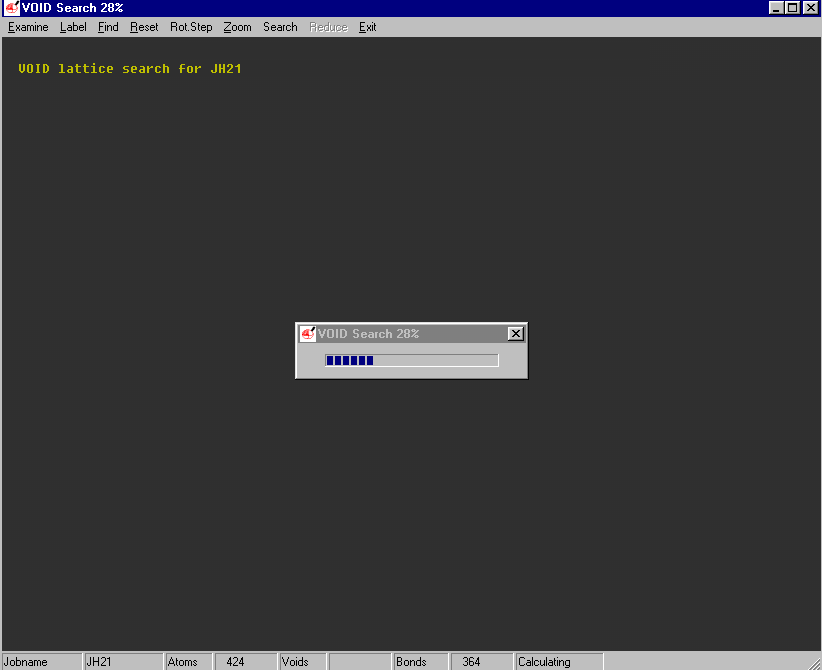
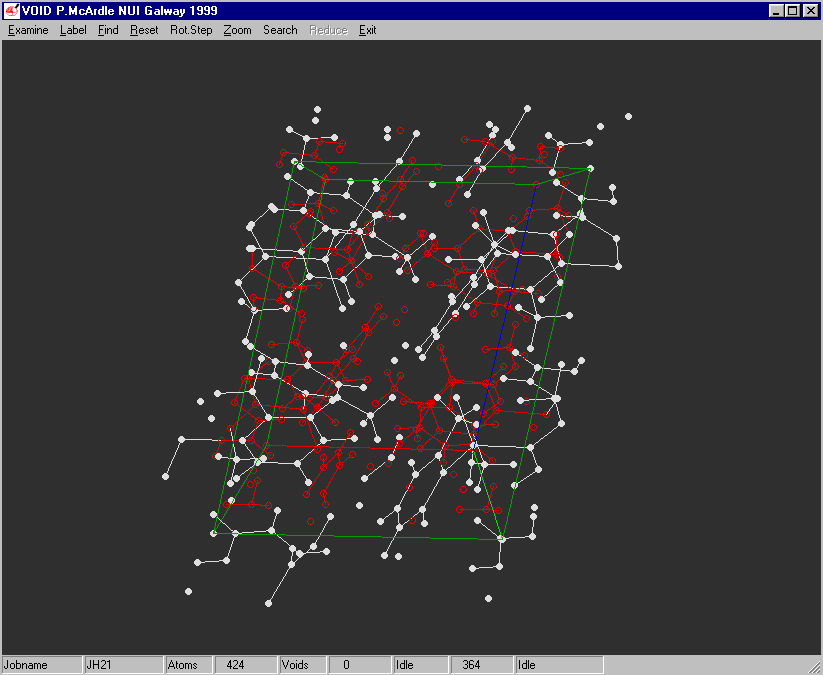


Structure Quality Checking
WinGX:
Has GUIs linking to a wide variety of Structure Checking, Analysis Options and Utilities (including a Windows version of Platon).
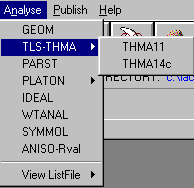
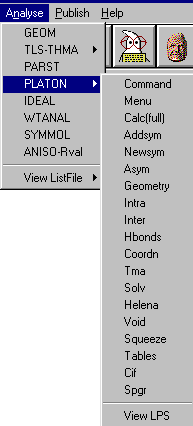

GUI XHYDEX (GUI over code by G. Orpen): Searching for Likely hydrogen positions. GUI CALC-OH (Nardelli 1999) GUI Parst, GUI Model and Data Transformation, SG Info, etc, etc.
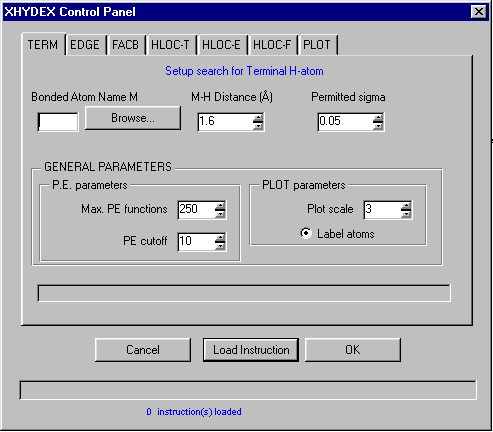
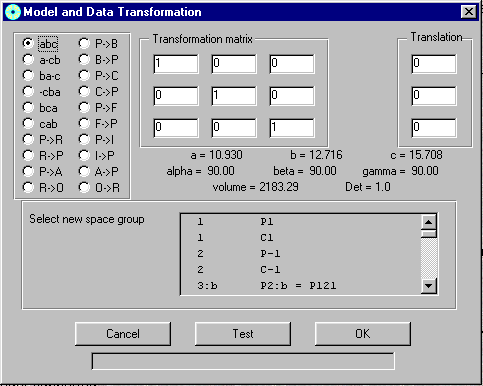
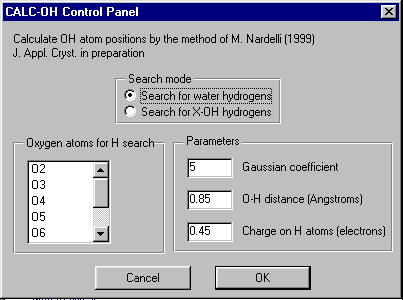
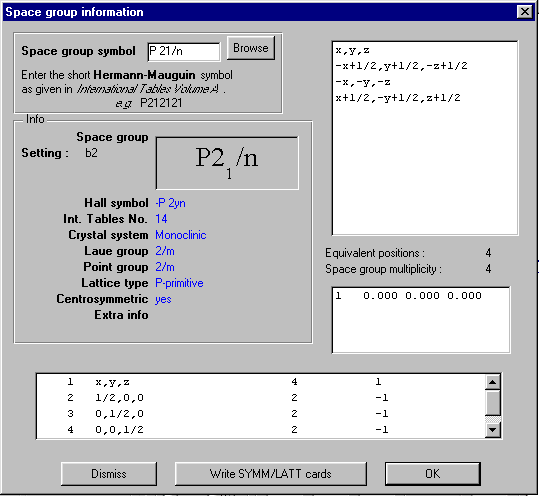
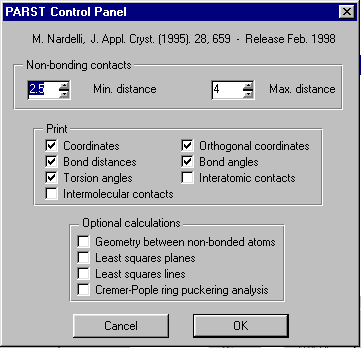
Platon (including Addsym - a mandatory program for all crystallographers!):
(links into WinGX and Crystals suite for Windows)
Addsym: check for missing symmetry. Will display or output a modified Shelx file with the updated structure if it finds a higher symmetry spacegroup. Will report miss-fitting atoms.
Refer: Short Communication: "P1 or P-1? Corrigendum", Acta Cryst B56 (2000) 744 from Richard E. Marsh
Original Structure Published in 1997 Triclinic, P1
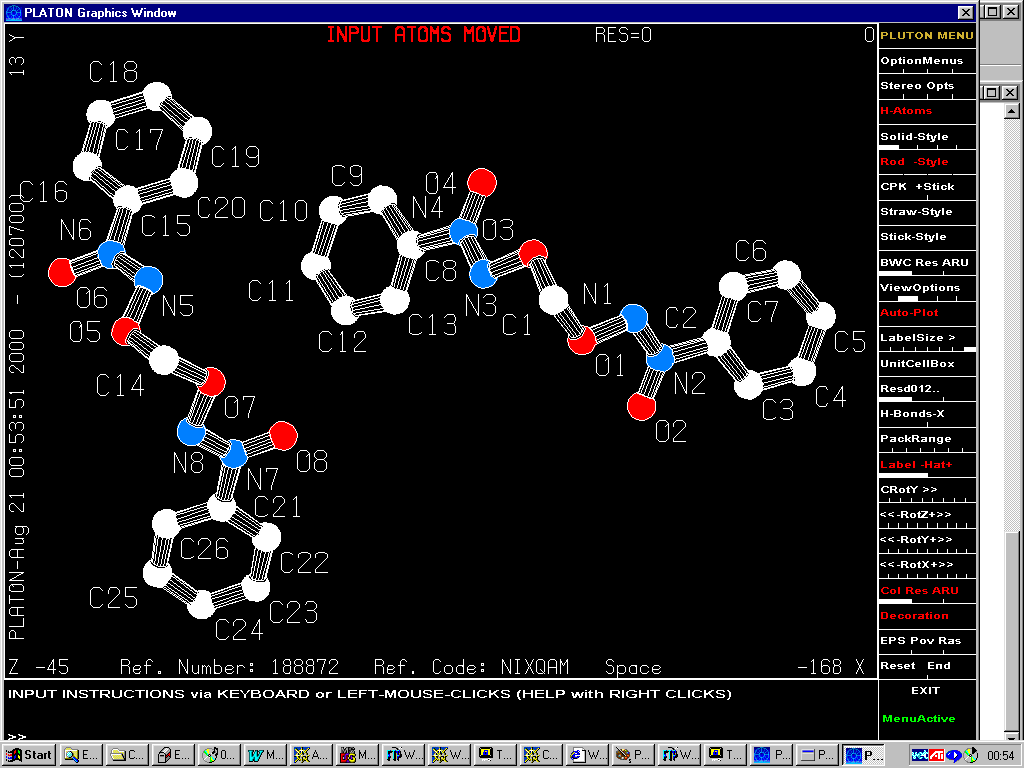
Reinterpretation by Marsh in 1999
Gives: Monoclinic C2
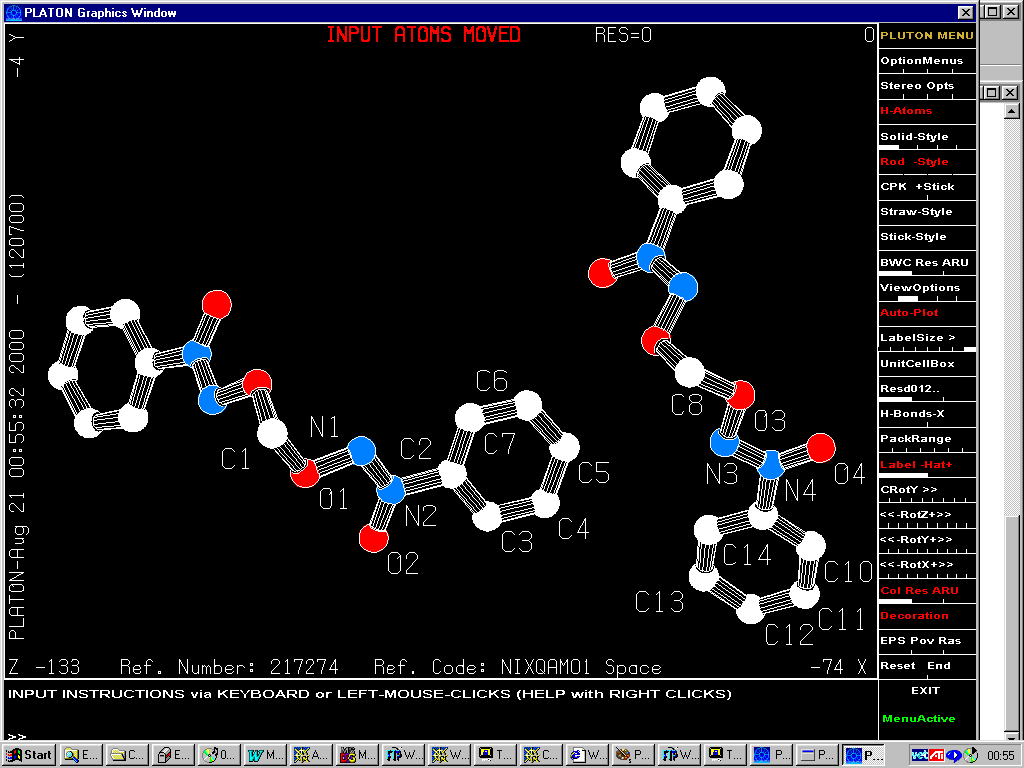
Press of a button in Platon/Addsym
(on either structure) gives:
Orthorhombic Fdd2
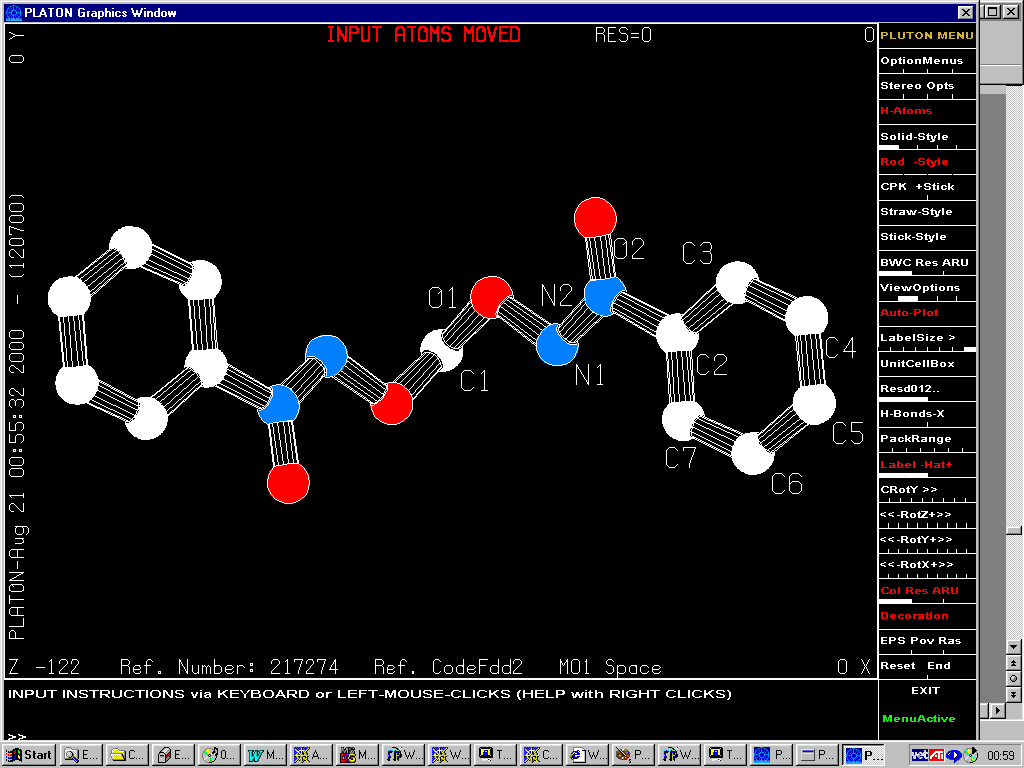
(with the option of generating a new Shelx *.RES file)
Is trivial to run Addsym routinely via Platon
Specialist Applications
(Single Crystal and Powder Diffraction)
Charge Density (single crystal)
Project XD
http://www.chem.gla.ac.uk/~paul/paul.html
Anharmonic Refinement
List of Software:
http://www.ccp14.ac.uk/solution/anharmonic/
Incommensurate Structure Refinement
List of Software:
http://www.ccp14.ac.uk/solution/incomm.htm
Quantitative Phase Analysis
Non-trivial and in many cases, custom solutions may be required. (a complete symposium in itself)Rietveld programs are commonly used for Quantitative Analysis (refer above list)
Refer to non-Rietveld references cited in:
http://www.ccp14.ac.uk/poster-talks/david-hay-quant-notes-axaa99/
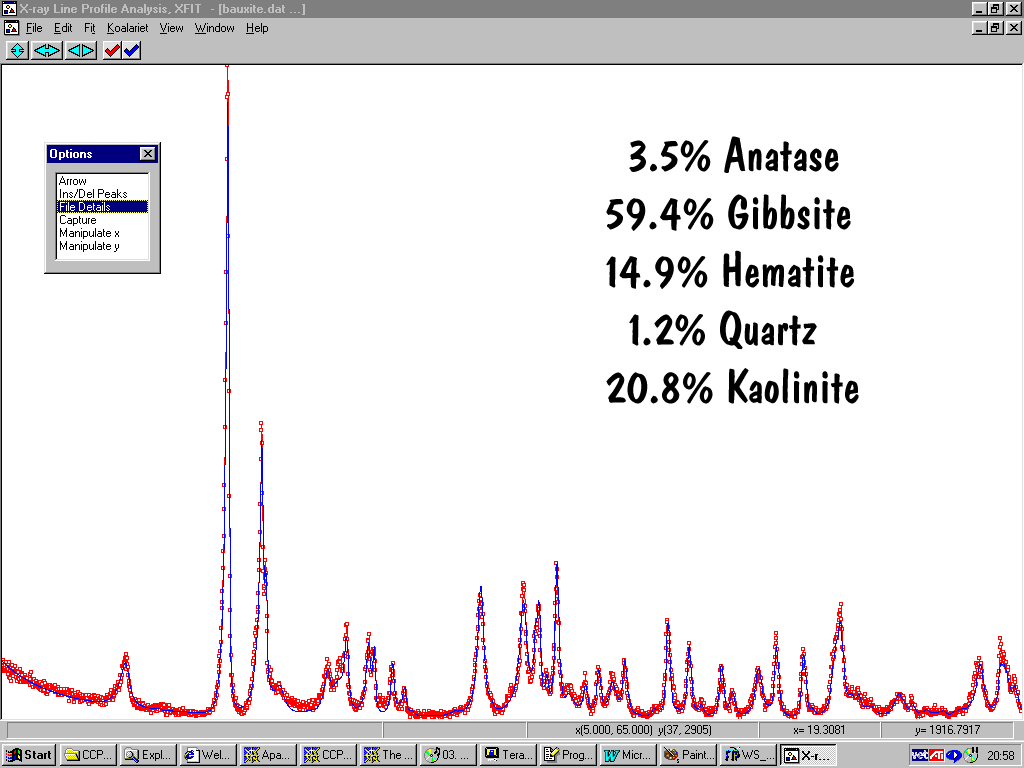
Materials Analysis Rietveld/Texture Software
Generic powder programs are often used adapted for specific problems.
GSAS - used for Texture analysis
Pole Figure, Texture Analysis
BEARTEX for Windows
Rudy Wenk - wenk@seismo.berkeley.edu
Texture, Pole figure, Calculates Orientation Distribution
http://www.seismo.berkeley.edu/~wenk/beartex.htm
http://www.ccp14.ac.uk/ccp/web-mirrors/beartex/~wenk/beartex.htm
GSAS for UNIX and PC
Bob Von Dreele - vondreele@lanl.gov
Menu driven interface with large vareity of functionality including Fourier map generation and viewing, ORTEP, Texture Analysis
ftp://ftp.lanl.gov/public/gsas/
http://www.ccp14.ac.uk/ccp/ccp14/ftp-mirror/gsas/public/gsas/
EXP Tcl/Tk GUI - new GUI replacement of expedit being developed by Brain Toby:
http://www.ncnr.nist.gov/programs/crystallography/
http://www.ccp14.ac.uk/ccp/web-mirrors/briantoby/programs/crystallography/
MAUD for Java
Luca Lutterotti - Luca.Lutterotti@ing.unitn.it
Sequel to Rietquan and all menu driven; concentrating on size/strain/stress analysis
http://www.ing.unitn.it/~luttero/
http://www.ccp14.ac.uk/ccp/web-mirrors/lutterotti/~luttero/
ftp://ftp.minerals.csiro.au/pub/xtallography/ccp14/ccp/web-mirrors/lutterotti/~luttero/index.html
POFINT
Daniel Chateigner - daniel.chateigner@univ-lemans.fr
Pole Figure Interpretation and Corrections
http://pecdc.univ-lemans.fr/pofint/pofint.htm
http://www.ccp14.ac.uk/ccp/web-mirrors/pofint/pofint/pofint.htm
popLA
John Bingert - bingert@lanl.gov
Texture Analysis and Modeling.
http://www.mst.lanl.gov/cms/poplalapp.html
http://www.ccp14.ac.uk/ccp/web-mirrors/popla/cms/poplalapp.html
Symmet
John Root
http://www.ccp14.ac.uk/ccp/web-mirrors/chalk_river_pole_figure/
Materials Analysis Rietveld
MAUD (for Java PC/Mac/UNIX)
Crystallite size and shape

Pole figure/Refinement wizard
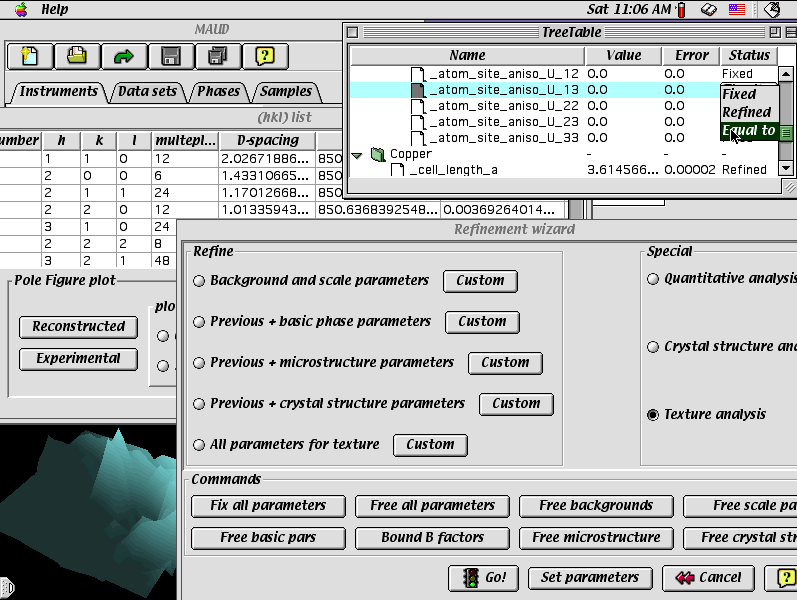
Powder Diffraction Pattern Calculation
Most Rietveld Programs can calculate powder patterns but may not be all that friendly to use compared to the following dedicated software:
Powder Cell
http://www.bam.de/a_v/v_1/powder/e_cell.html
Imports common file formats and GUI based editing of structure:

GUI based manipulation of structure as well as powder pattern.
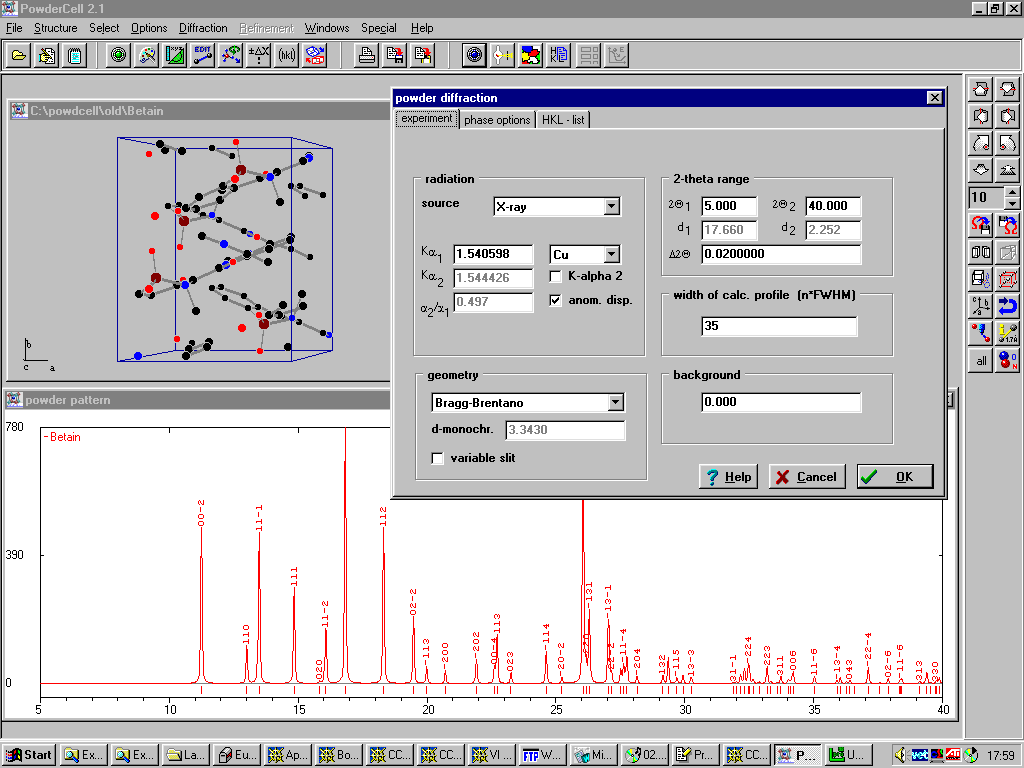
Poudrix
http://www.ccp14.ac.uk/ccp/web-mirrors/lmgp-laugier-bochu/
Imports common file formats and GUI based editing of structure:
Can accurately model Anomalous Dispersion for Synchrotron X-rays.

Structure Visualisation and Photorealistic Hardcopy Output
Examples of Software that can do this:
(problem can be that or having a high enough quality printer)
ORTEX (Images and Movie Animations):
http://www.nuigalway.ie/cryst/
http://www.ccp14.ac.uk/ccp/web-mirrors/ortex/cryst/
Just open up a Shelx format *.INS/*.RES file and go for it

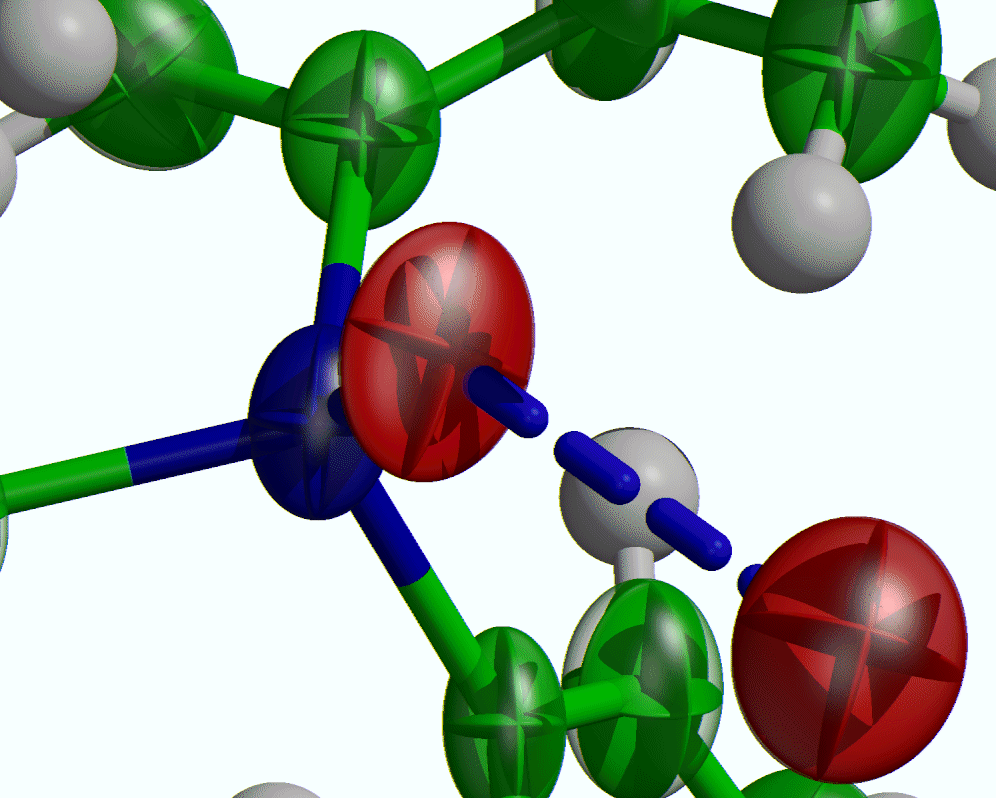

Movie Making in ORTEX
(The Commercial XSEED software will also do this as well
http://www.lbarbour.com/xseed/)
Open a Shelx File and optimise the view in ORTEX
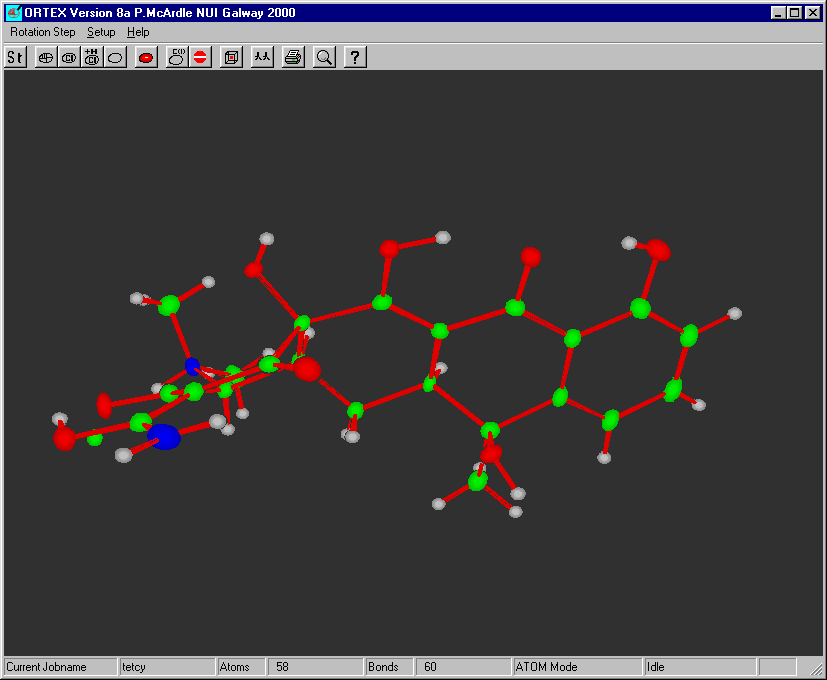

Start the RASMOV Movie Generator
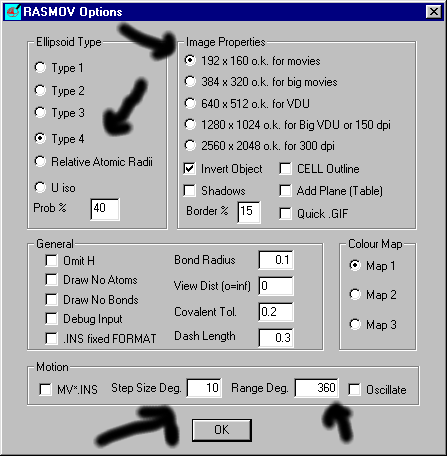 Set the Options you Desire:
Set the Options you Desire:
Web Ready Animated GIF will be generated:
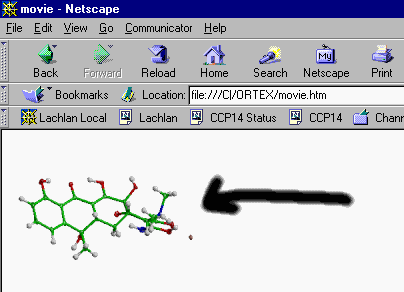
GUI WinOrtep 3/WUI WinStruplo/WinGX
http://www.chem.gla.ac.uk/~louis/software/
http://www.ccp14.ac.uk/ccp/web-mirrors/farrugia/~louis/software/
Can load a variety of structure formats including some Rietveld formats such as GSAS, LHPM, Fullprof, Rietan.
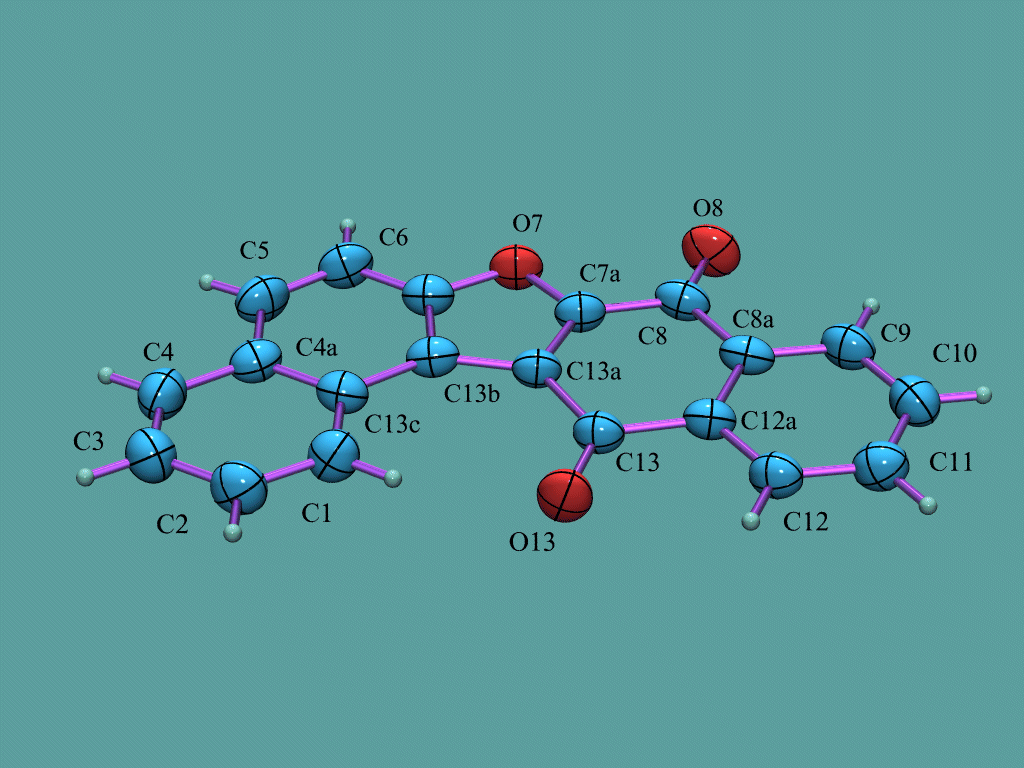
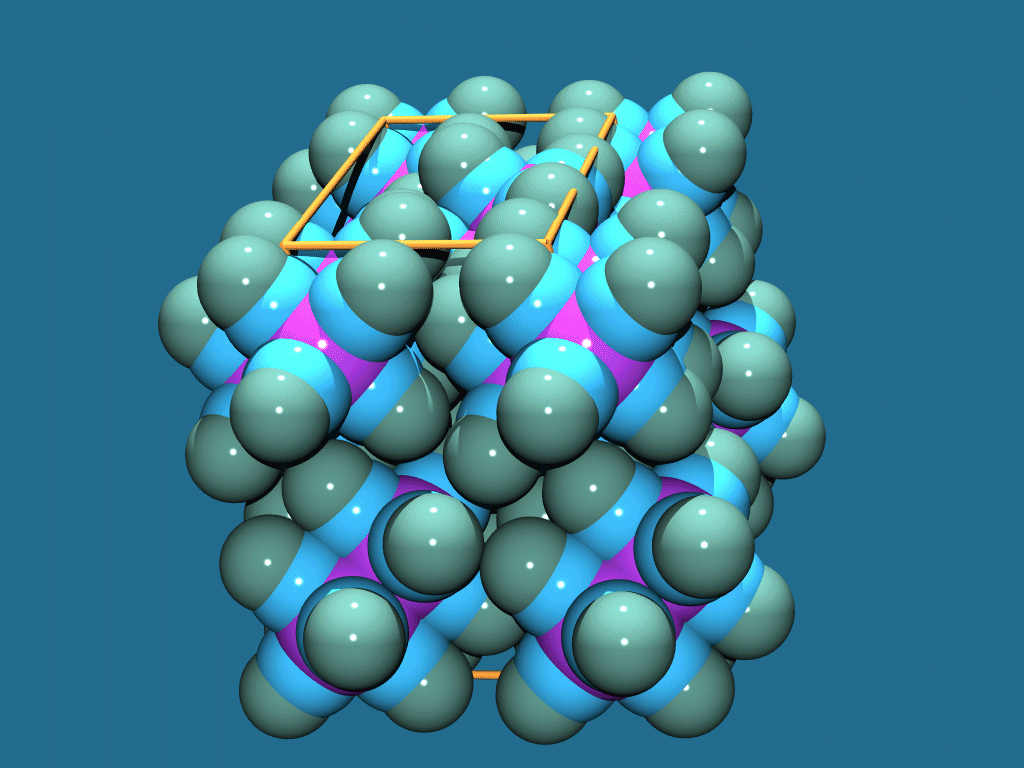
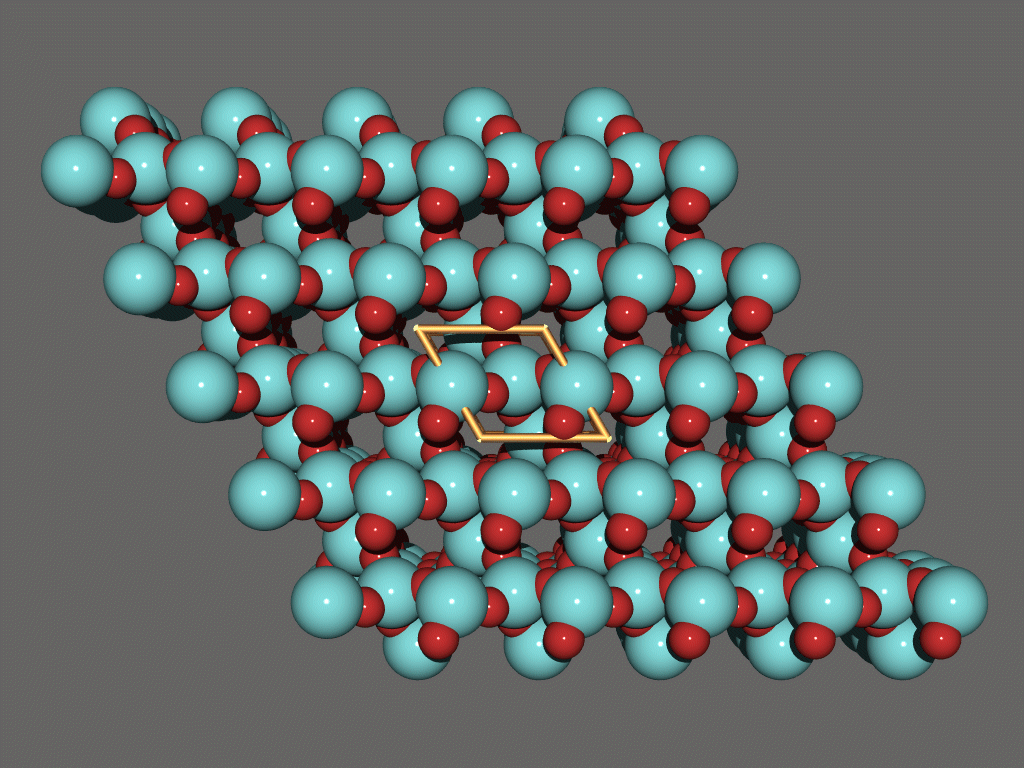
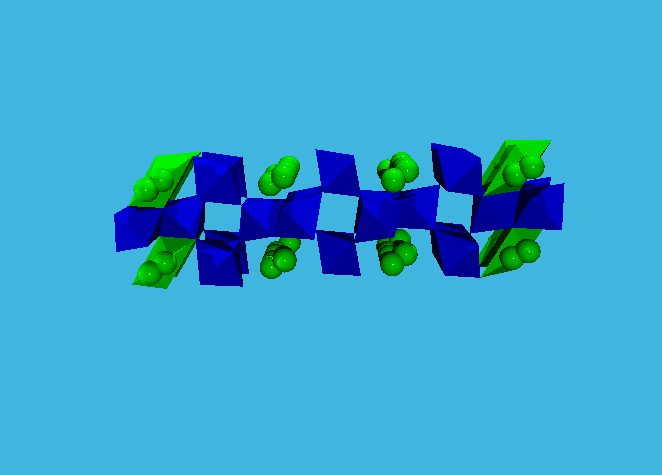
Platon/Pluton/System S
http://www.cryst.chem.uu.nl/platon/
http://www.ccp14.ac.uk/ccp/web-mirrors/platon-spek/platon/
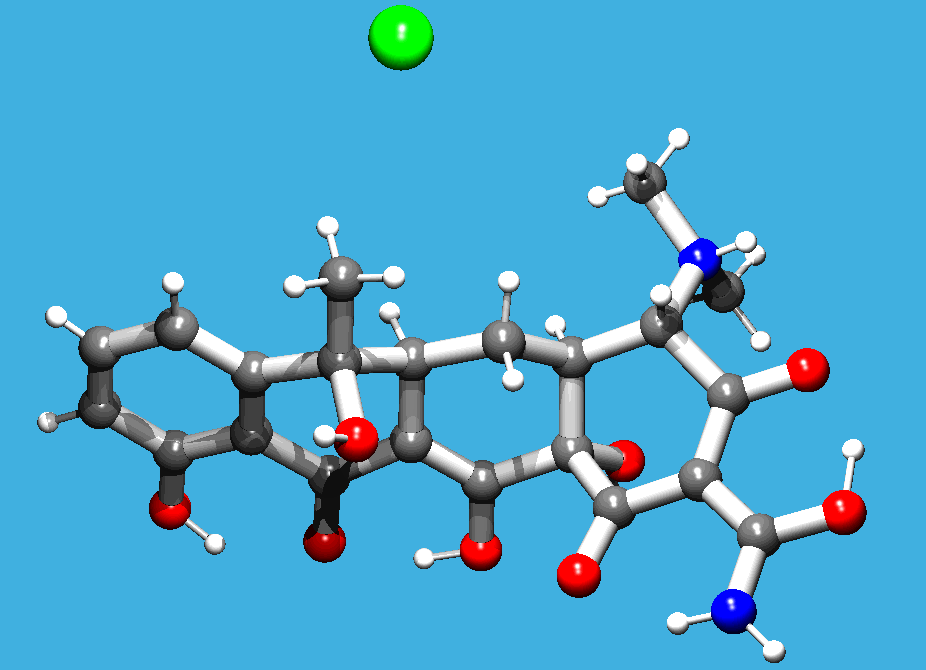
GNU Xtal Suite
http://xtal.crystal.uwa.edu.au/
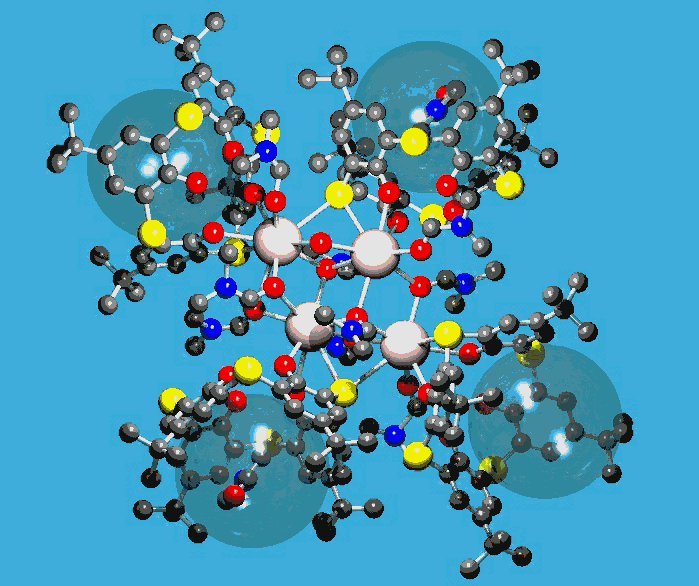 http://www.ccp14.ac.uk/ccp/web-mirrors/xtal/
http://www.ccp14.ac.uk/ccp/web-mirrors/xtal/
Marching Cubes 3D Fourier Map Viewer
(links into Crystals and WinGX) – outputs Povray files
http://mysak.umbr.cas.cz/~husakm/Public/MarchingCubeELD/MarchingCubeELD.htm
http://www.ccp14.ac.uk/ccp/web-mirrors/marchingcube-fourierviewer/~husakm/Public/MarchingCubeELD/MarchingCubeELD.htm
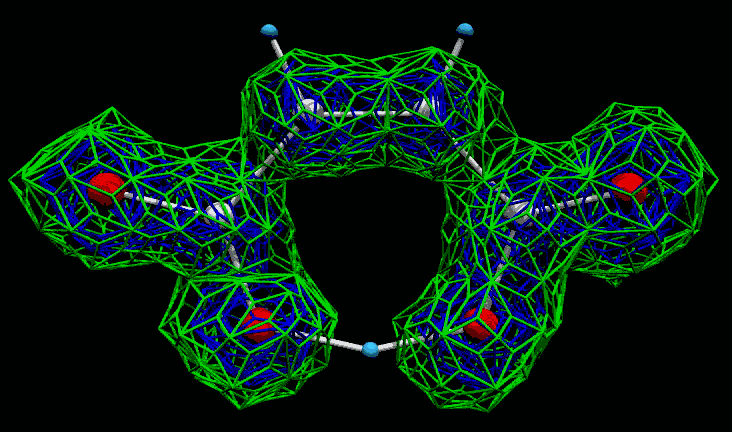
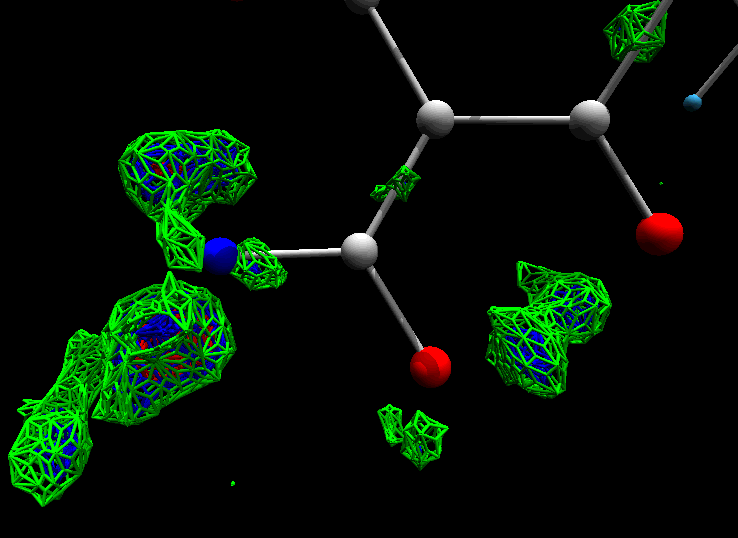
Dual Boot UNIX/Windows PCs
Obtain the ability to run a very wide range of crystallographic software on cheap, powerful commodity PCs.
Tutorials exist for helping you do this:
CCP14 based tutorials on installing multi-boot
A local UNIX advocate would be quite happy to get a dual boot system going for you.
Free UNIX Operating Systems (install off the internet)
Linux
refer:
http://www.ccp14.ac.uk/solution/linux/
FreeBSD (can run linux binaries)
refer:
http://www.ccp14.ac.uk/solution/bsdunix/
(be careful of hackers invading your systems when running Linux/UNIX. CCP14 tutorials try to be security conscious)
VMWARE (simultaneously run of Windows and Linux):
http://www.vmware.com/
(Commercial software)
Freely Available Compilers, GUI Building Kits and Source Code
http://www.ccp14.ac.uk/recomm/
If Isolated from the Internet (or on very slow links)
Free
Xtal Nexus CD-ROMs for academics and students
http://www.unige.ch/crystal/stxnews/nexus/index.htm
(Supported & Sponsored by the IUCr, ICSU and CCP14)
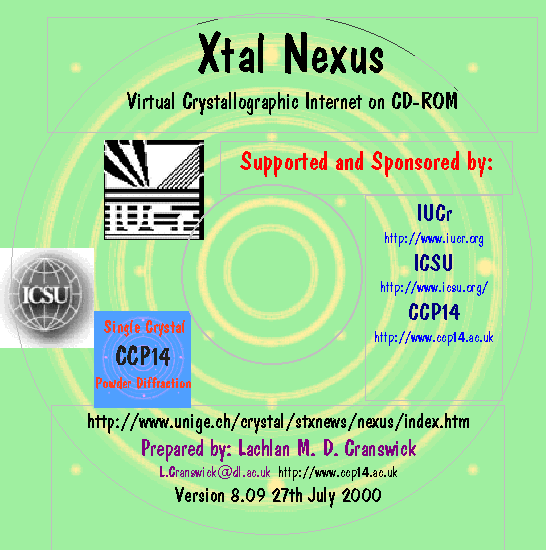
Contact: Lachlan Cranswick
CCP14
CLRC Daresbury Synchrotron Laboratory,
Warrington, Cheshire, WA4 4AD U.K
E-mail: l.cranswick@dl.ac.uk
WWW: http://www.ccp14.ac.uk
Summary:
Large Diversity of Available Software
Getting better all the time
Free for Academics and Students
No Excuses!
Most of the above software and resources can also be downloaded via mirrors on the EPSRC sponsored CCP14 site (Collaborative Computational Project No 14 for Single Crystal and Powder Diffraction):
http://www.ccp14.ac.uk
If any queries, E-mail:
ccp14@dl.ac.uk
or:
L.Cranswick@dl.ac.uk

![]()
![]()






 Red bonds imply bonds are
Red bonds imply bonds are  Change Nitrogen to Carbon using the mouse
Change Nitrogen to Carbon using the mouse












































 (includes ability to manipulate structures for Dirdif fragment searching)
(includes ability to manipulate structures for Dirdif fragment searching)











 Preliminary work on a new structure: looking at the E-stats and HKLs
Preliminary work on a new structure: looking at the E-stats and HKLs





 ORTEX / WinGX / Crystals/ CAOS-Sir97/ Platon-System S/ GNU Xtal Suite
ORTEX / WinGX / Crystals/ CAOS-Sir97/ Platon-System S/ GNU Xtal Suite  / Gretep
/ Gretep










 Define the Slant Plane by selecting 3 atoms then right click to go into the Fourier Map option.
Define the Slant Plane by selecting 3 atoms then right click to go into the Fourier Map option.































 Set the Options you Desire:
Set the Options you Desire:





 http://www.ccp14.ac.uk/ccp/web-mirrors/xtal/
http://www.ccp14.ac.uk/ccp/web-mirrors/xtal/

